
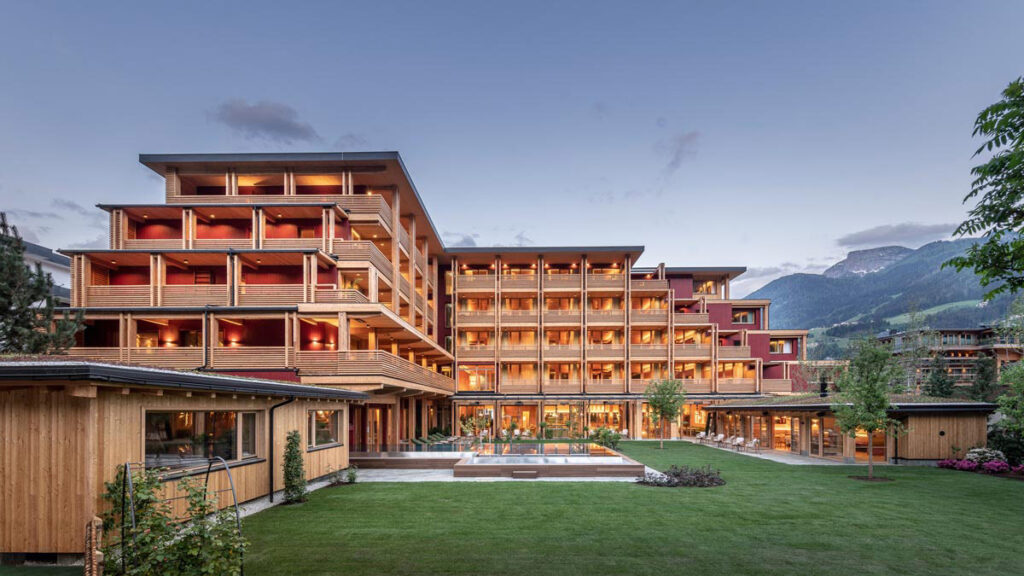
Timber construction by star architect
The first five-storey hotel in mass timber design is located in Zillertal, Austria, created by celebrated Italian architect Matteo Thun. It is no coincidence that one of the leading players in structural timber construction is based only a stone’s throw away.
Zell am Ziller is an idyllic district in Zillertal, Tyrol, with 1,700 inhabitants and a range of accommodation. The latest addition to the hotels on offer in this tourist destination is a shining example of sustainable design and resource-efficient operation. Managed as a Green Spa Hotel, the MalisGarten stores 3.2 gigawatt hours of solar energy and sequesters over 1,500 tonnes of CO₂. The project’s mass timber design plays a significant role here, together with its heating and cooling system based on geothermal energy.
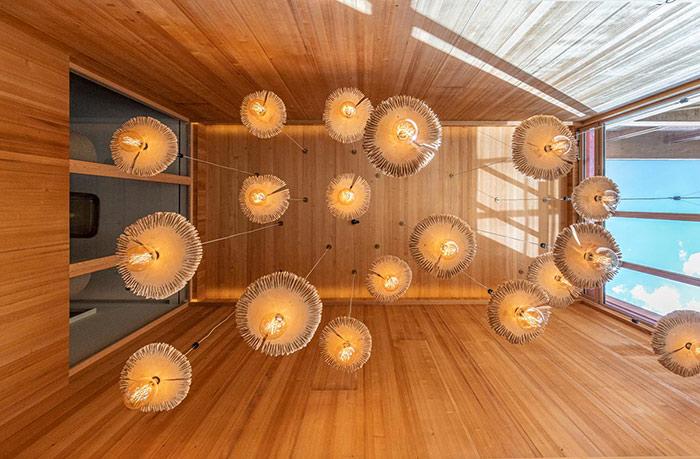
From top to bottom
“Wood is the only material I know that has aesthetic and technical durability,” explains Matteo Thun. The South Tyrolean architect has made a name for himself primarily with international hotel and design projects. For Zillertal’s five-star hotel, he used timber as a sustainable construction material from top to bottom.
Besides the floors, walls, ceilings, facade and furniture, even the stairwells and elevator shafts are built with mass timber. This consistent approach complies with the client’s instructions: Christina Binder-Egger and Reinhard Binder had a vision of building a hotel made entirely of wood. Although that’s not really surprising considering their background – with binderholz as the family business.
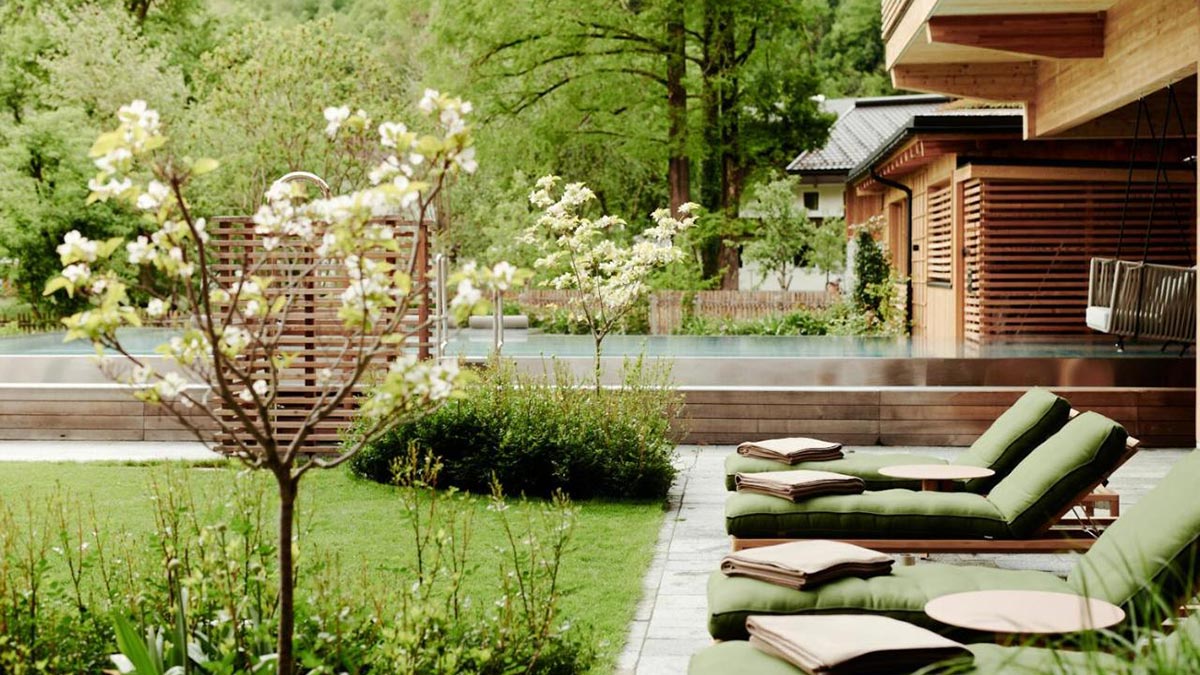
Family expertise
Anybody who has anything to do with structural timber construction is sure to come into contact with Binderholz Bausysteme GmbH at some point. Based in Fügen, Zillertal, the company was established in 1950 and has since developed from its beginnings as a sawmill into the co-developer of major timber construction projects around the globe. Its expansion strategy has produced spectacular growth in recent years. With sites in Germany, Finland, the UK, Latvia and the USA, turnover has increased more than sixfold over the past seven years. Since 2021 binderholz has been regarded as the largest sawmill company in Europe.
Wood is the only material I know that has aesthetic and technical durability.
Matteo Thun, architect
Its product portfolio ranges from profiled timber for DIY stores, pellets and horse shavings, through to glulam and cross-laminated timber for structural timber construction. The company’s largest projects include the Vallen residential complex in Växjö, Sweden and a timber high-rise with 27 storeys currently being planned in Tanzania.
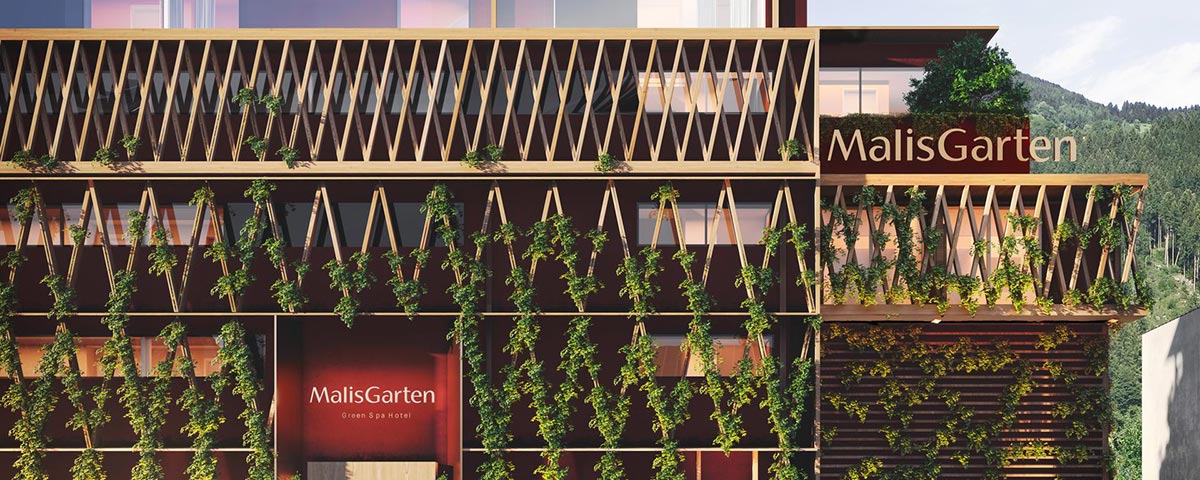
15-month construction time
Reinhard Binder now runs the company together with his brothers Hans and Franz Binder. Consequently, the family is an ideal source of expertise and experience when it comes to building a hotel made exclusively of timber and with several storeys. “Thanks to binderholz and their know-how, we have achieved the creation of MalisGarten with materials from the 21st century,” says Matteo Thun, describing his cooperation with the Austrian timber giant.
Thun was supported by Tyrolean architectural firm Meissl Architects. Working together, they managed to build the hotel in a record-breaking period of 15 months. Architect Alexander Meissl observes: “The flexibility in design, the short construction time and the ecological advantages signal a successful future for wood as a building material.”
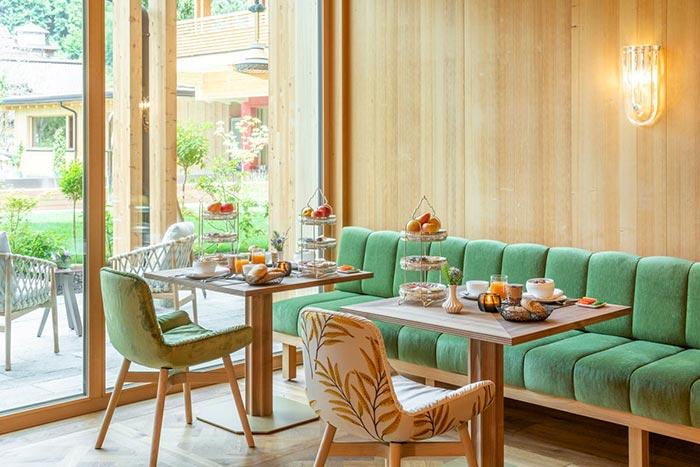
Best Newcomer Hotel
The architects and their clients didn’t just use timber for construction purposes, though. Wood is the material of choice throughout the interior design as well. They were even bold enough to combine different types of wood as well, with a blend of spruce, fir, larch, pine, oak and walnut. The hoteliers emphasise the regenerative effect of this natural material and the resulting stable indoor climate.
MalisGarten is part of the Zillerseason Luxury Hotel Collection, which also includes Das Posthotel, HochLeger, ZillerLodge and the restaurants Heleni and DieMarie. In a survey by the Falstaff Hotel Guide, the timber spa retreat was awarded the highest number of points in the award for the Best Newcomer Hotel.
Text: Gertraud Gerst
Translation: Rosemary Bridger-Lippe
Photos: ZillerSeasons, Dirk Tacke
Other articles
that might interest you

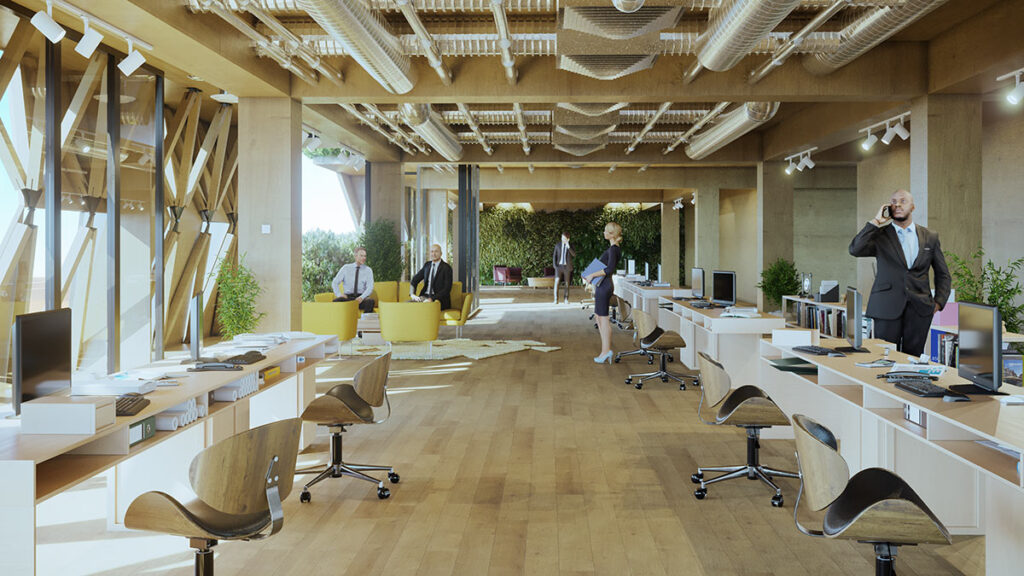
The design for the urban office building Saint Denis in Paris shows the potential of parametric design in timber construction. Architect Arthur Mamou-Mani is a luminary in this new discipline, and we were able to meet him online.
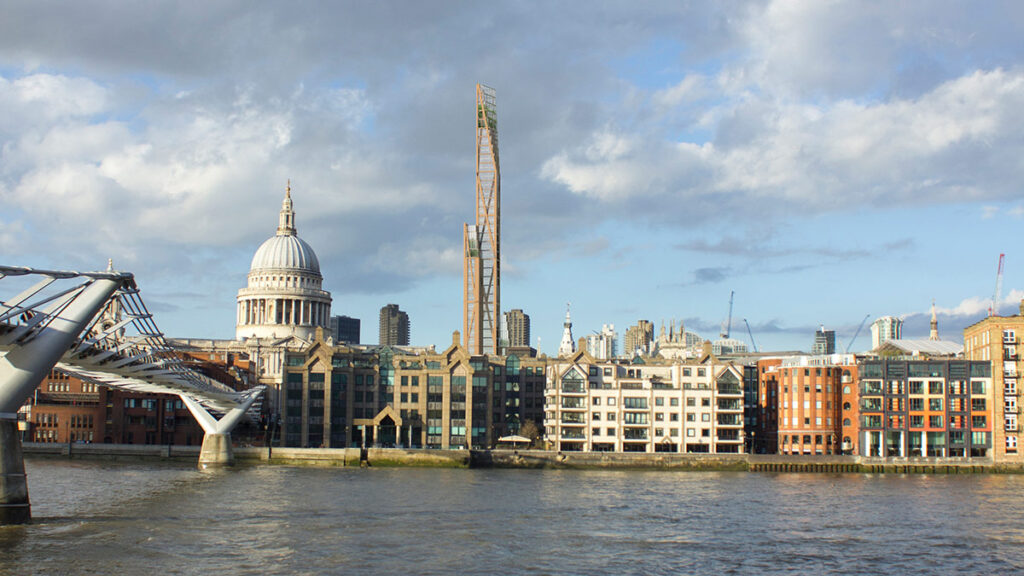
Researchers at Cambridge University are helping to turn London’s spectacular vision of a wooden skyscraper into reality. The Oakwood Timber Tower is to rise 300 metres into the sky, almost level with the tallest building in the city.
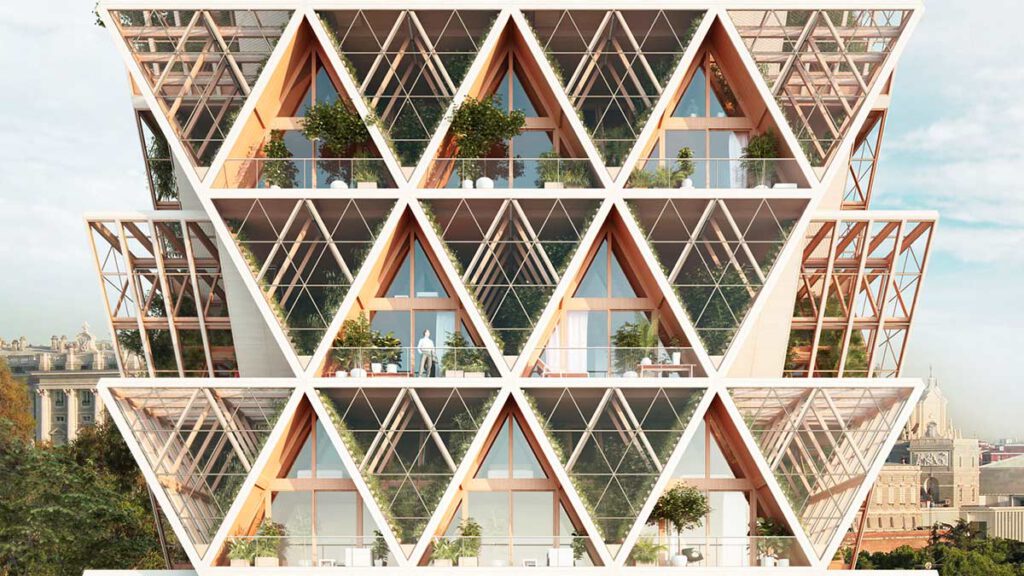
Self-sufficiency is no longer a dream reserved for downshifters. The modular building system named The Farmhouse designed by Studio Precht allows residents to grow food in big cities.
The European Organization for Nuclear Research examines the structure of matter. Its latest construction is already underway: named CERN B777 and designed by Henning Larsen, the new research centre will be round and mostly made of wood.
Australia could be described as a late mover as far as sustainable construction is concerned. One of its timber buildings – the award-winning Macquarie University Incubator – shows how to reduce energy and resources on all levels.
The TUM Campus at Munich’s Olympiapark shows how a carefully planned timber project can save resources and the associated costs. Shortlisted for the DAM Preis 2024, it was formerly Europe’s largest timber construction.
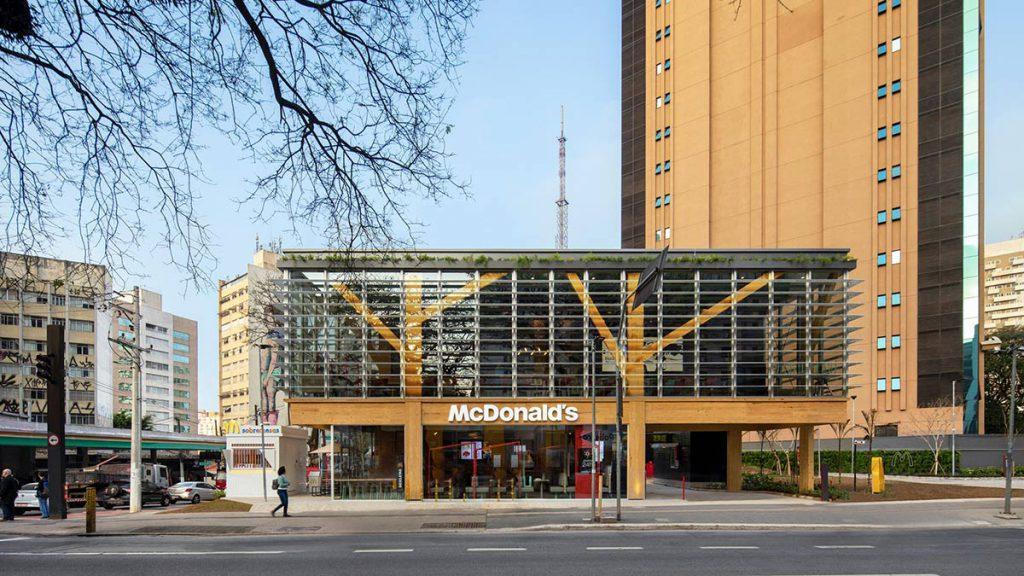
São Paulo is home to Brazil’s “most sustainable McDonald’s”. It has a timber design and is presented as an educational project for sustainable building. For the company, the wooden structure is a “recipe for the future”.
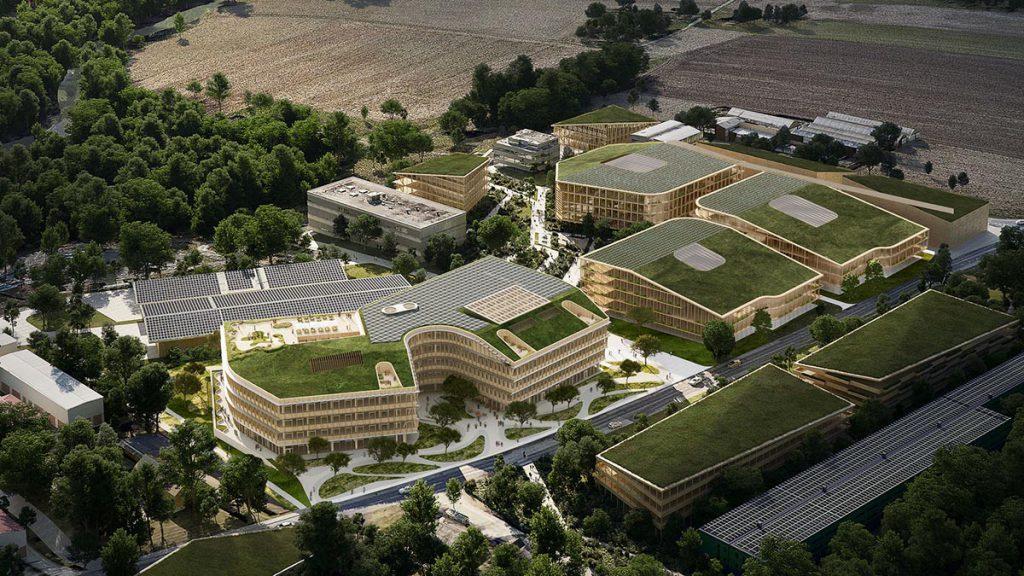
The master plan named Ecotope was chosen by renowned Swiss education and research institute EPFL to fulfil an important requirement. Green spaces will flourish instead of blanketing the ground with bleak tarmac; circular materials will replace concrete and steel.
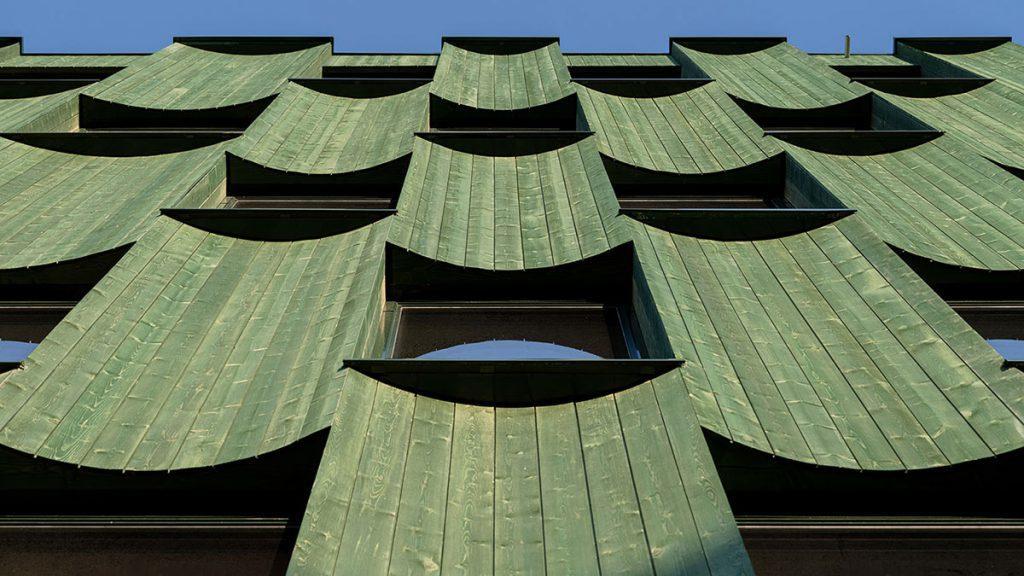
On the Norwegian coast, the office building Lumber 4 has been constructed in only twelve months – using wood. For the architects at Oslotre, the project shows that timber buildings are not just sustainable, but also economically competitive.
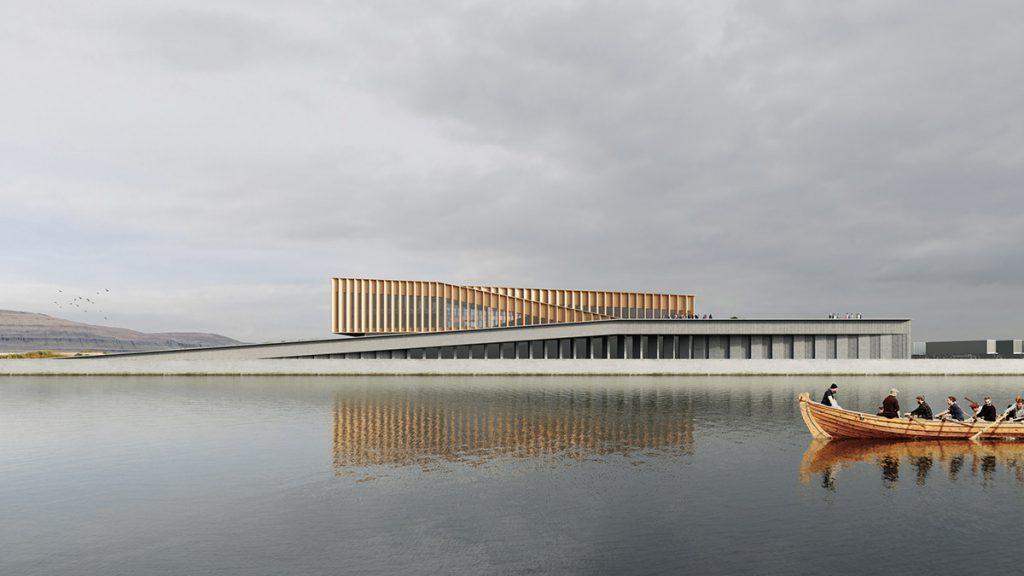
The new Torshavn ferry terminal is set to give the Faroe Islands a new architectural landmark with a hybrid timber-concrete design. With architects Henning Larsen on board, it also re-opens the harbour to the islanders.
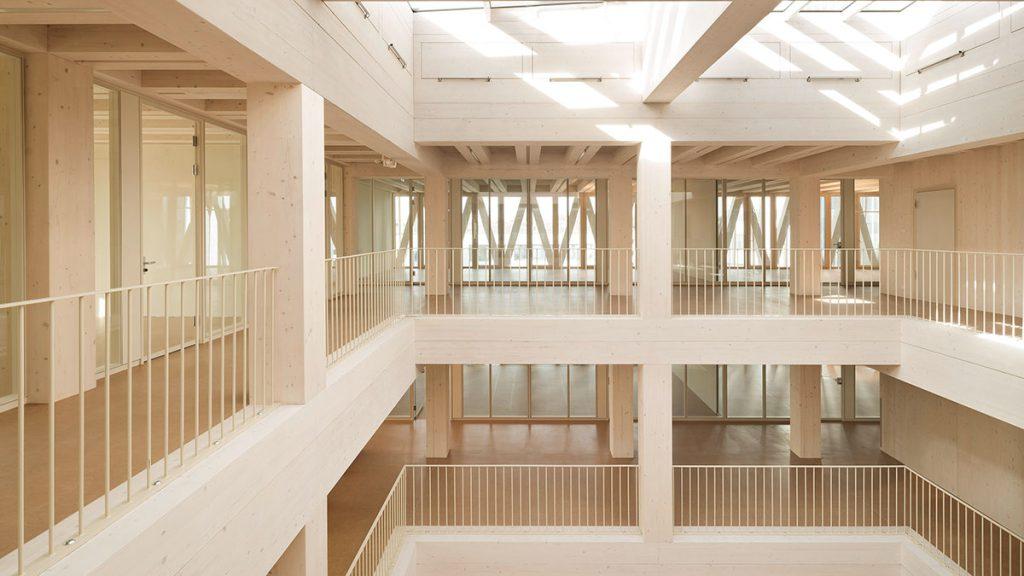
The German city of Heilbronn is home to a remarkable timber structure. Innovation Factory 2.0 displays a new kind of aesthetics, both on the inside and outside. This sophisticated paradise for innovation displays precision craftsmanship from Switzerland.
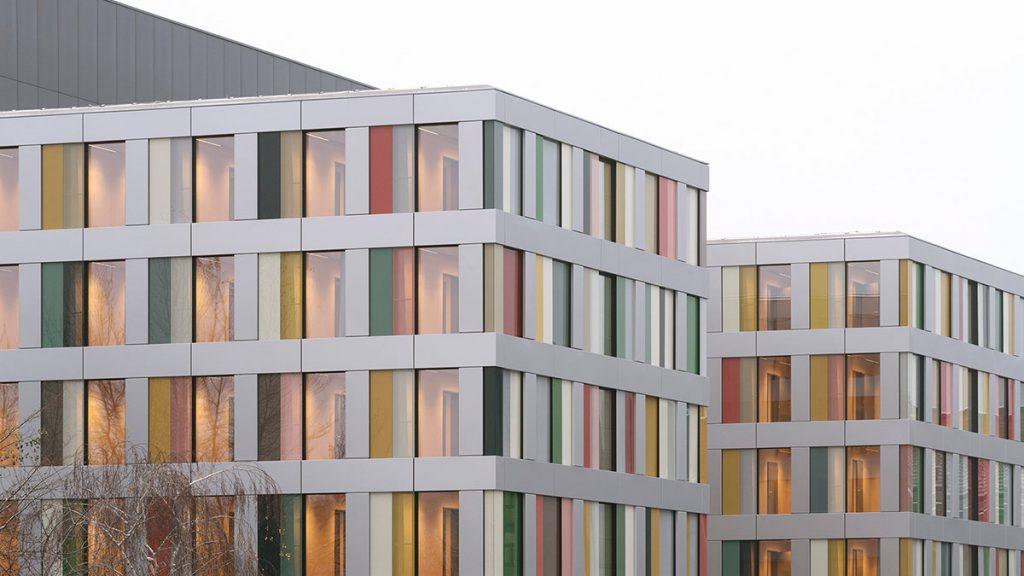
For its new office building Luisenblock West, the German Bundestag chose a design using prefabricated wooden modules. Austrian module experts Kaufmann Bausysteme have been working flat out ever since. On hotels, schools and student halls.
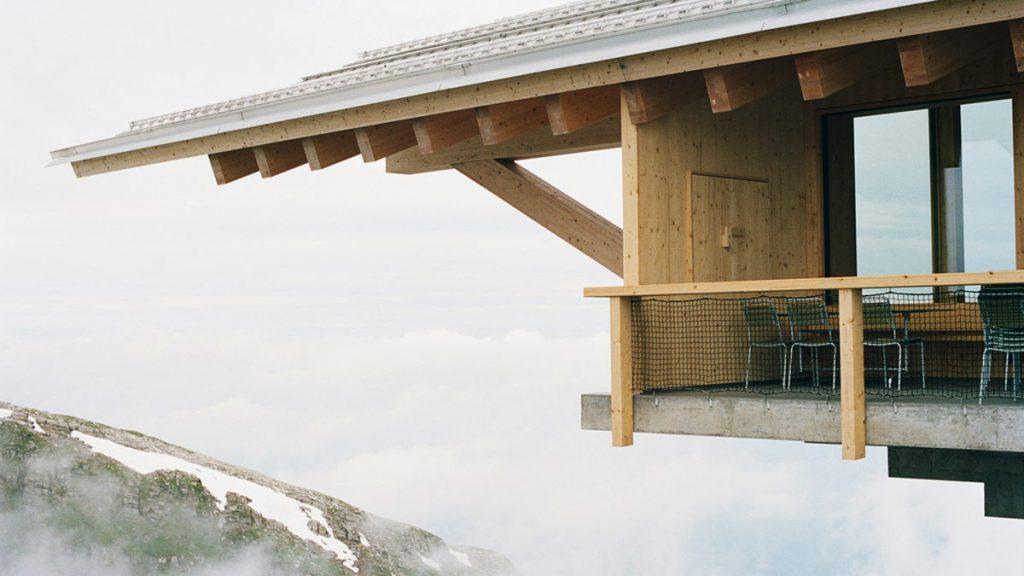
Anybody looking to combine a skiing trip with some architectural gems will be in their element at the top of the Chäserrugg in Switzerland. A tour of this award-winning building designed by Herzog & de Meuron gives an insight into sustainable construction methods at a height of 2,262 metres.
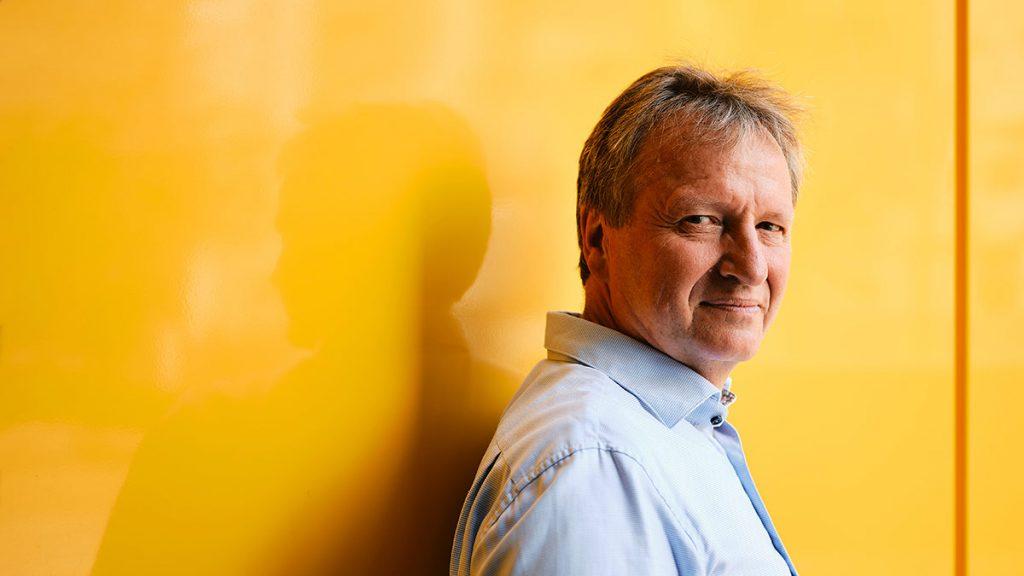
Stefan Winter ranks among the leading experts on the use of wood as a building material. In an interview with UBM Development, the professor and trained carpenter explains why hybrid solutions are not a step backwards for timber construction and how long-lasting timber products can help to mitigate climate change.
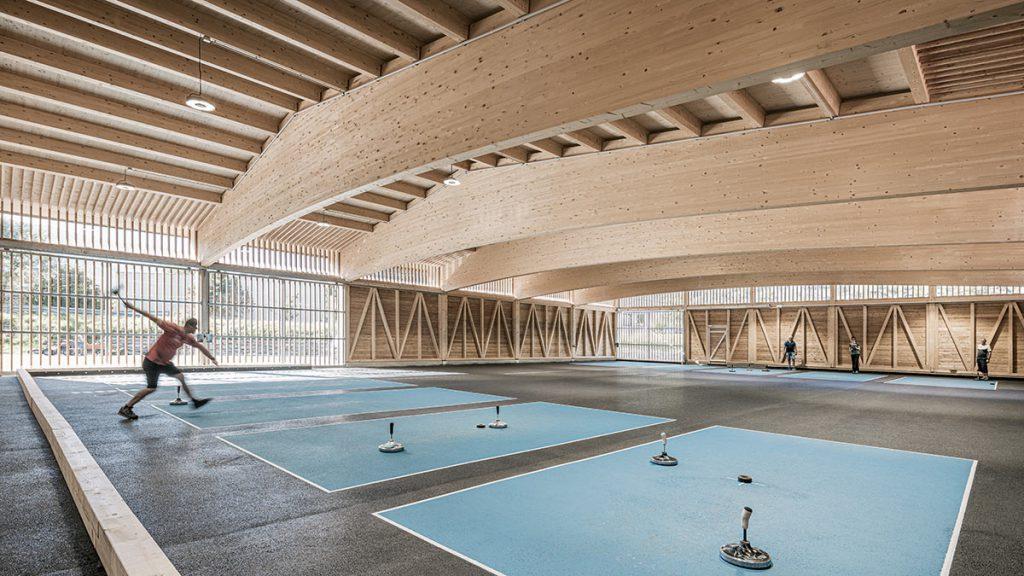
Shortly after Lungau Arena opened its doors, it was singled out as an ambassador for exemplary and sustainable timber construction. This new sports facility goes far beyond economic and functional requirements.
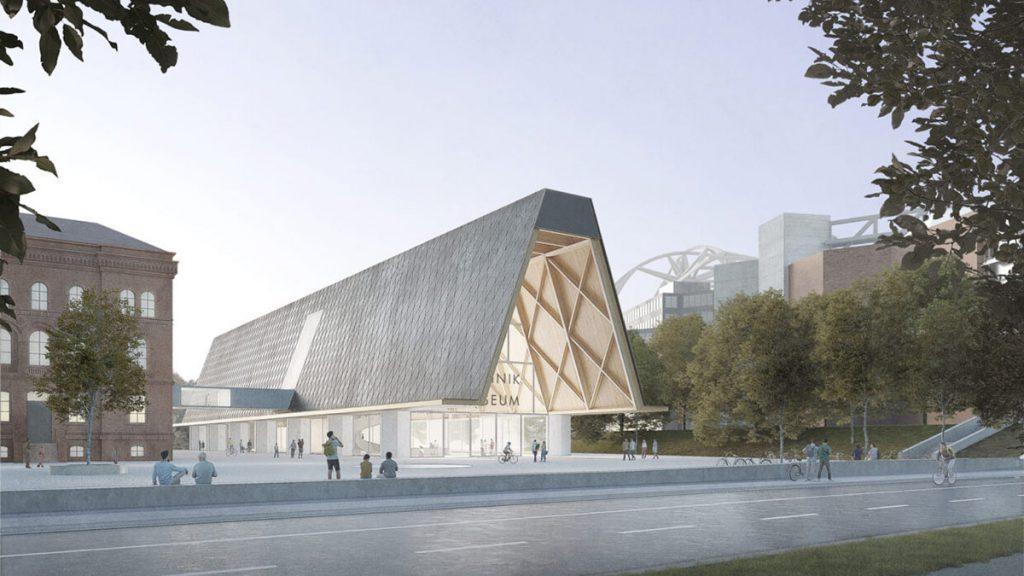
A new entrance building has been designed for the Deutsches Technikmuseum in Berlin. With its striking lattice roof, the design by Austrian architectural firm Innauer Matt demonstrates that modern timber construction is a byword for progress through sustainability.
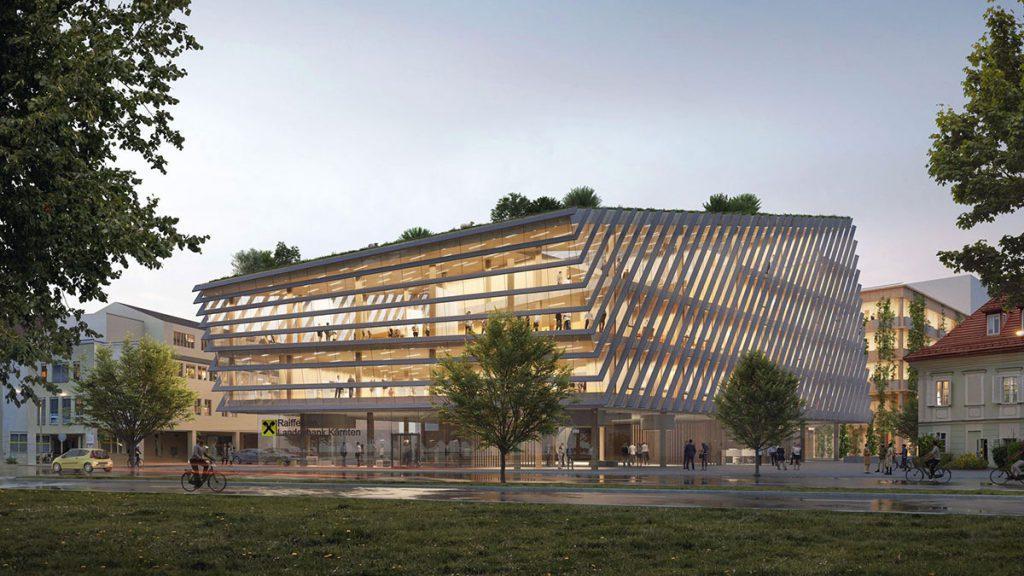
The new Raiffeisen Landesbank Kärnten building is a transparent timber construction with room for sheep on its roof. In this interview, querkraft architect Jakob Dunkl talks about the design and also the connection between sustainability and love.
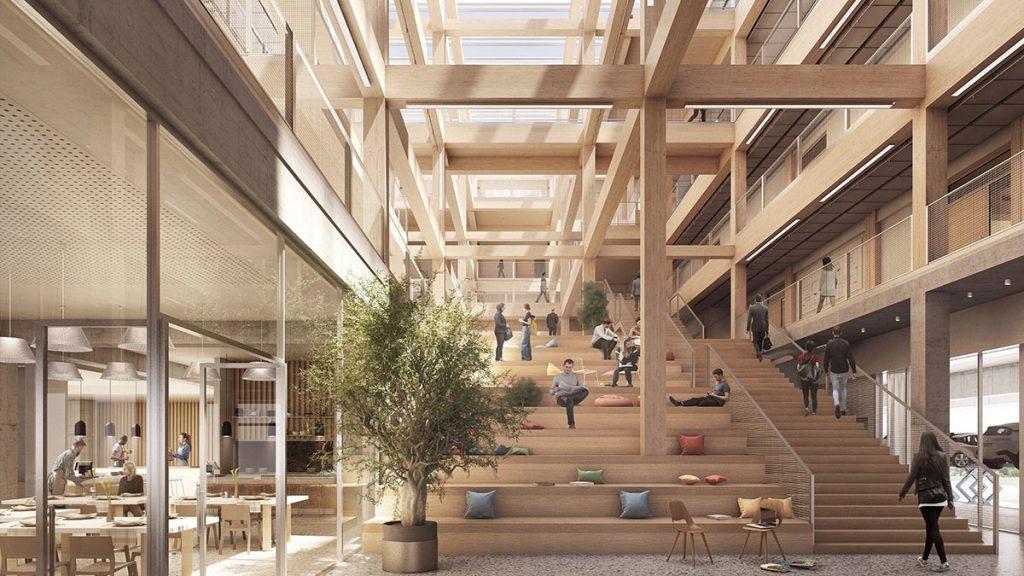
German car manufacturer BMW is upgrading its resources. The company is building a new Talent Campus at its Munich headquarters to equip its staff for e-mobility and automation. With wood as the main construction material, the design is by local architecture firm allmannwappner.
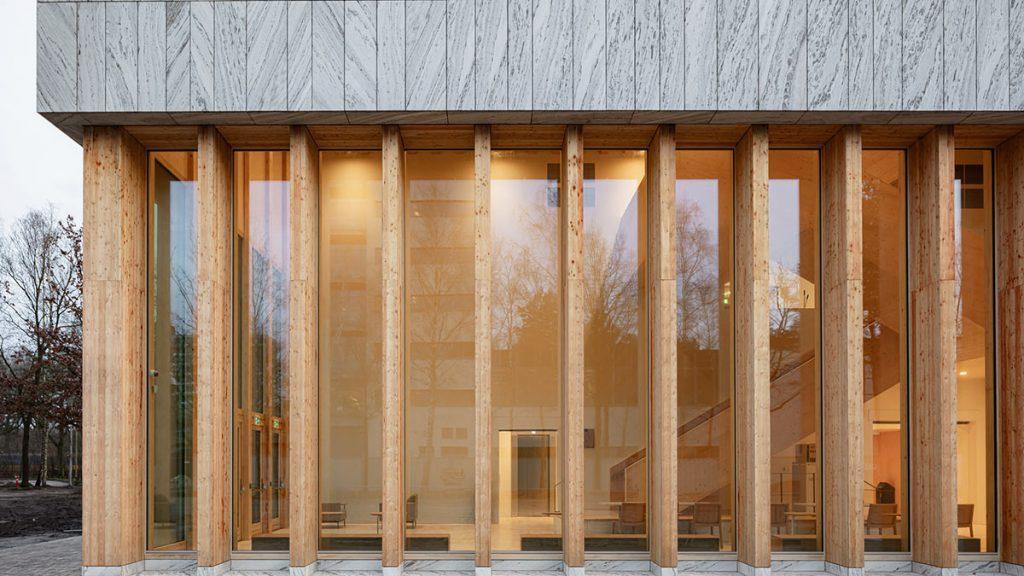
The Marga Klompé Building at Tilburg University is the first academic building in the Netherlands to be built out of wood. Insulation made from recycled denim jeans is part of the circular design by Powerhouse Company.
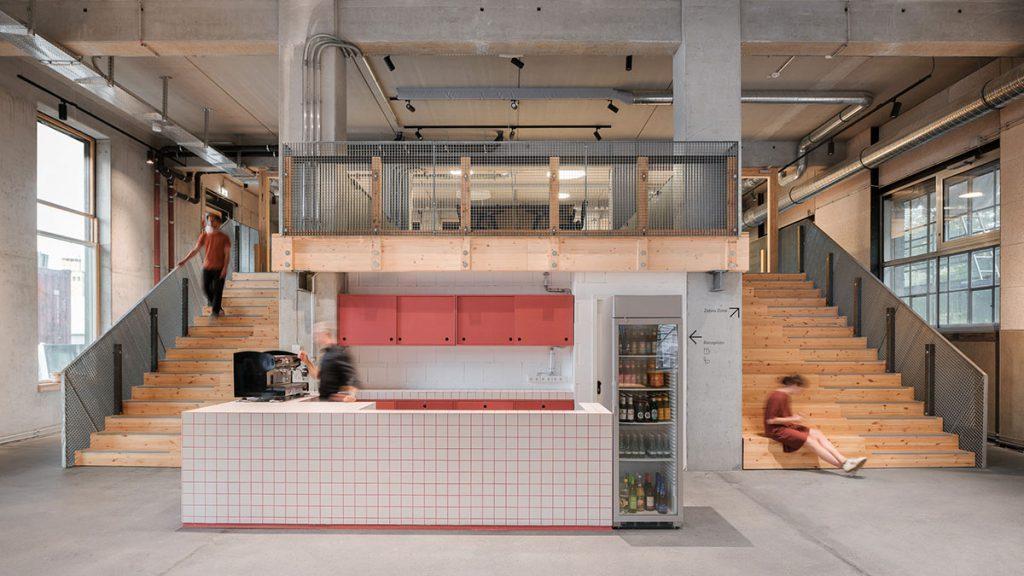
Impact Hub Berlin is a community and coworking space that has taken recyclable construction from theory to practice. LXSY Architekten used timber construction and recycled building materials for the interior design in a converted old warehouse.
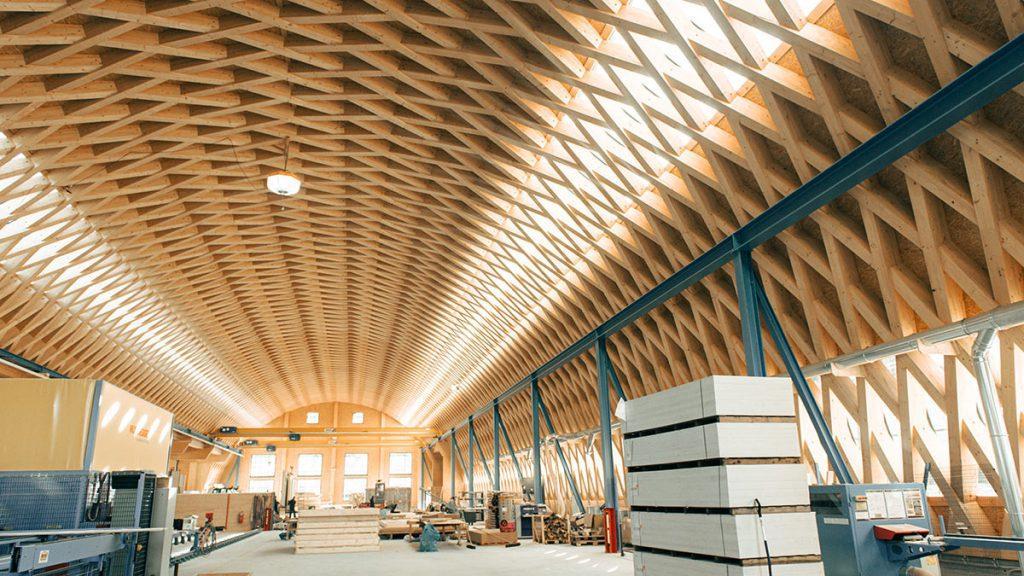
One hundred years after patenting of the Zollinger roof, this self-supporting timber structure is experiencing a renaissance. Designed to save materials, recyclable and easy to build, it has regained popularity for the construction of today’s factory workshops.
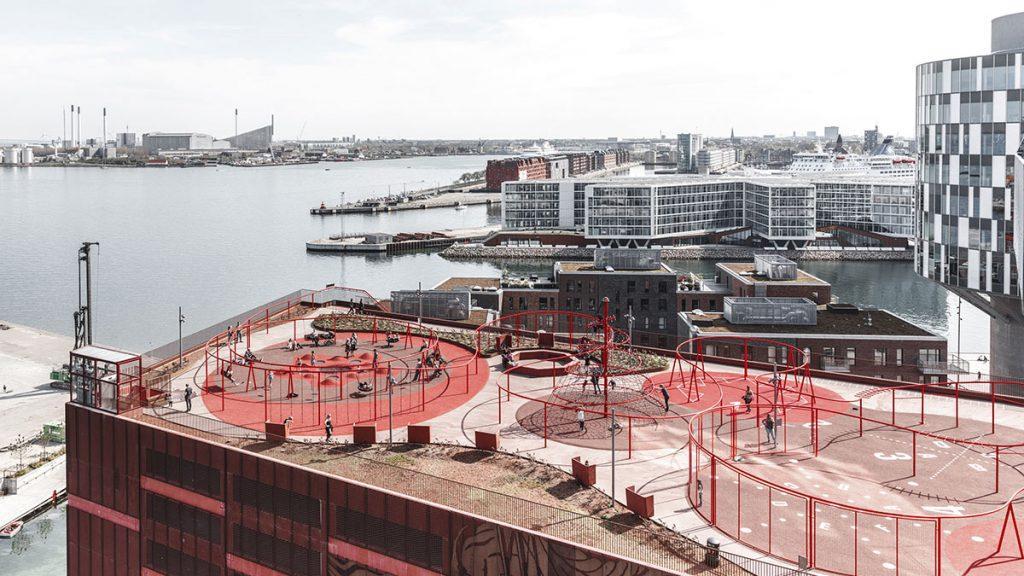
Copenhagen is fast approaching its goal of achieving carbon neutrality. Its former city architect Camilla van Deurs, recently appointed head of the Nordic Office of Architecture's new specialist area for strategic urban development, spoke to ubm magazine. about the biggest levers for reducing carbon emissions.
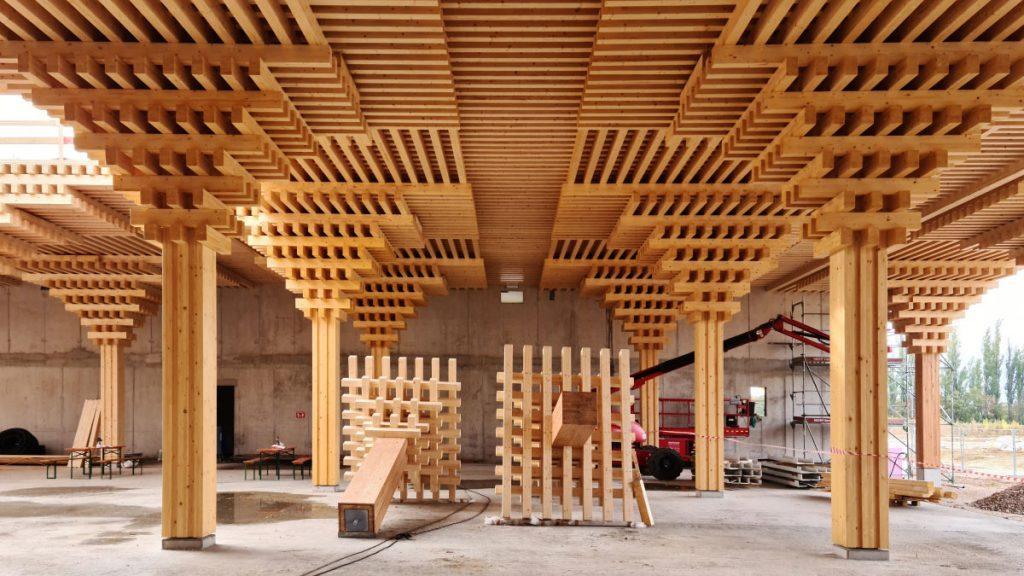
A supermarket designed as a net-zero construction that produces its own food for the region. This is the concept behind Rewe Green Farming and its prototype in Wiesbaden, Germany. Timber engineering is central to the company’s plan for similar stores.
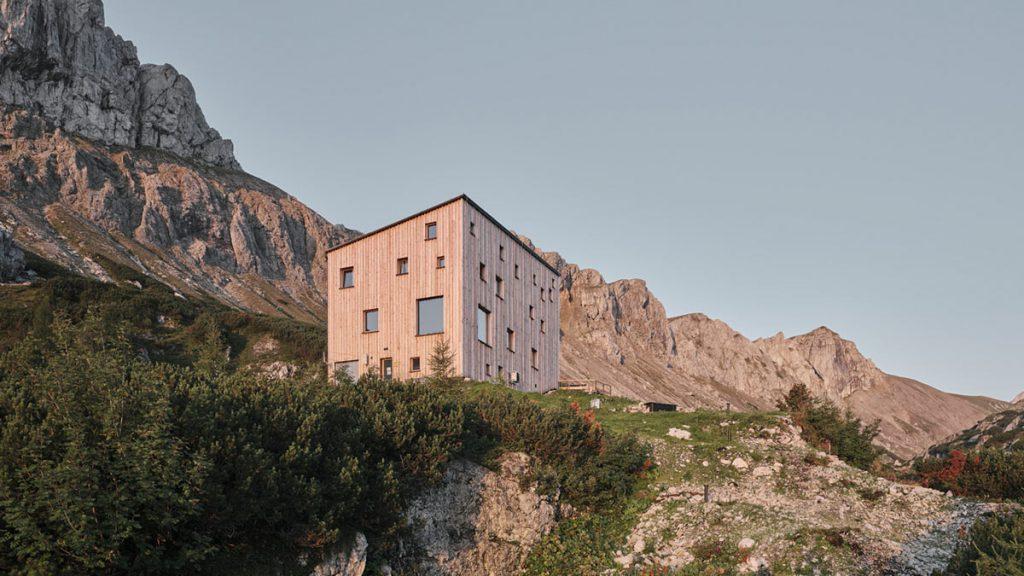
The recent rebuild of Voisthaler Hut in Austria’s Hochschwab Mountains uses structural timber design with sophisticated architectural and ecological features. This energy self-sufficient mountain hut designed by Dietger Wissounig Architekten has been awarded the “Umweltgütesiegel” and also won the 2023 BIG SEE Architecture Award.
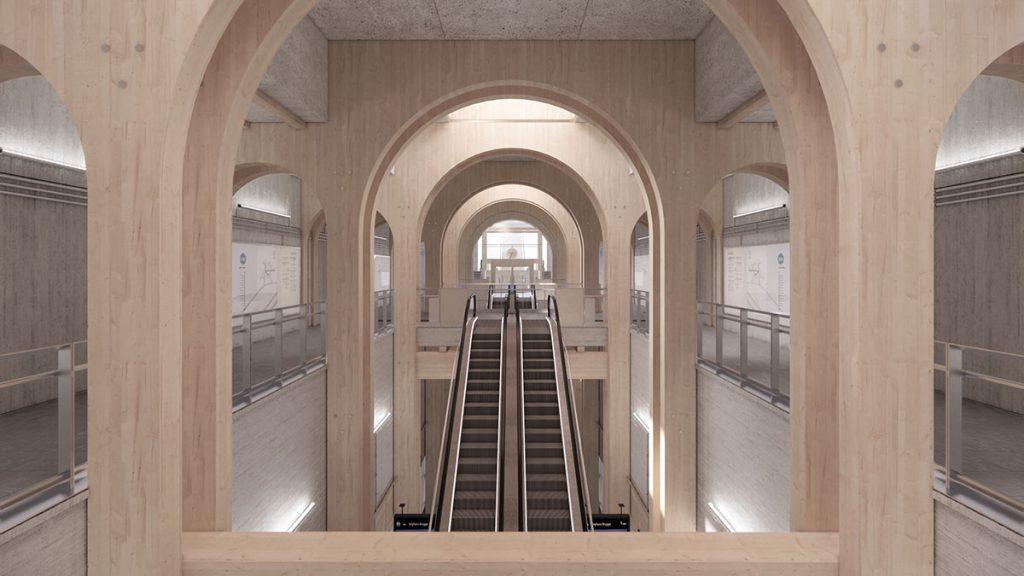
Although this design looks like a utopian dream, in Copenhagen it is set to become reality. Over the coming years, the Danish capital will be introducing timber-hybrid metro stations. The concept by JaJa Architects adopts a holistic approach and takes climate-friendly building below ground.
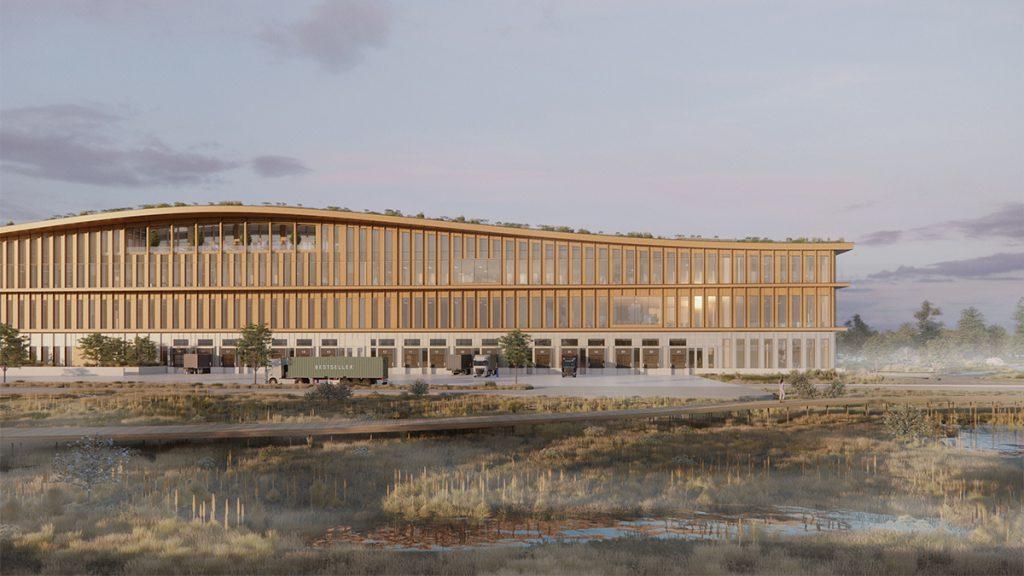
Not far from Amsterdam, fashion giant Bestseller is building Europe’s largest timber logistics centre – called “Logistics Center West”. Designed by Danish architects Henning Larsen, it aims to set new standards in sustainability and design.
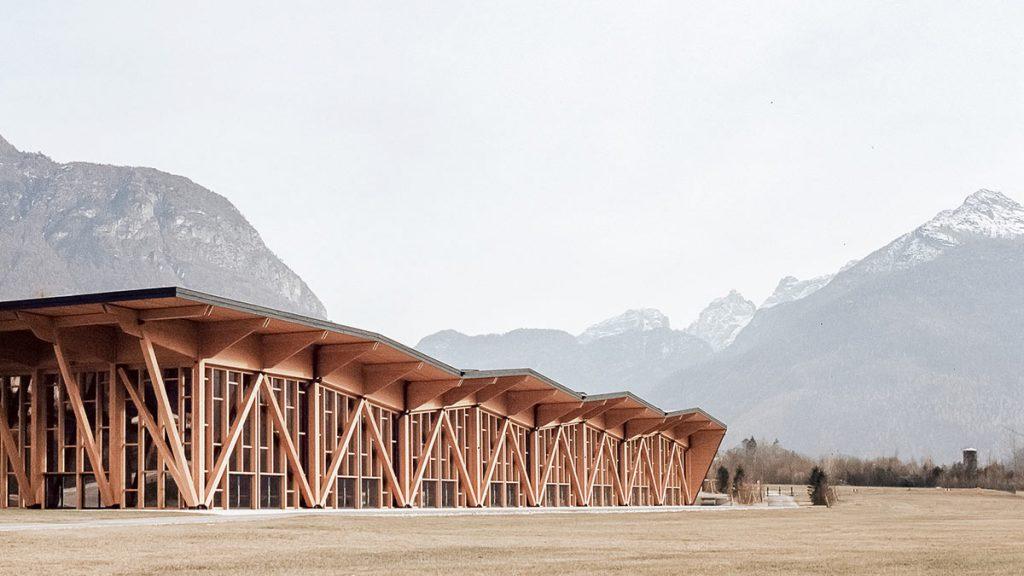
Its design blends alpine architecture with the outline of a craggy mountain range. The Congress and Exhibition Centre in the municipality of Agordo in northern Italy reimagines aesthetic forms of expression in timber construction.
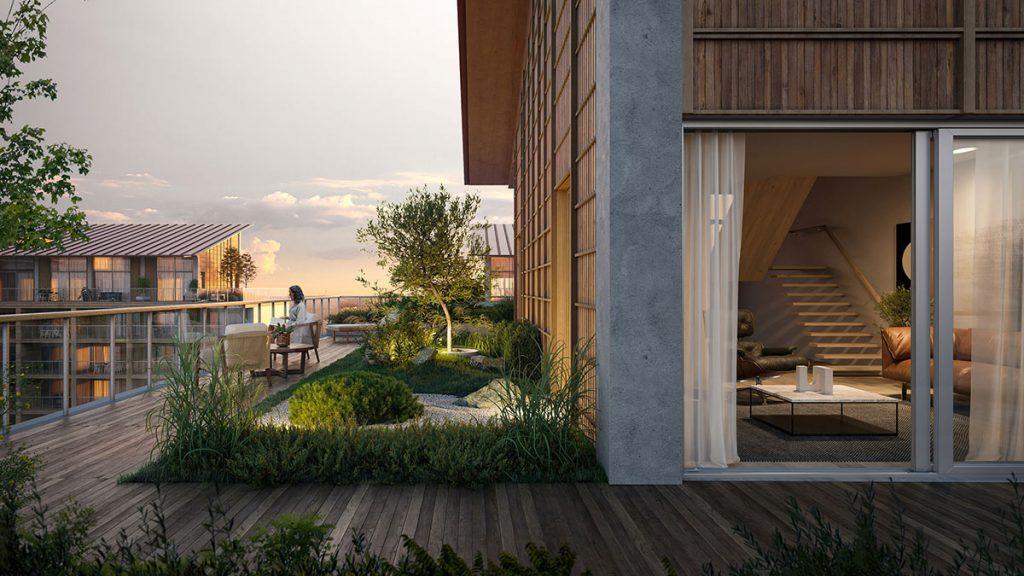
The Belgian city of Antwerp will soon benefit from a Japanese-inspired, timber-hybrid residential tower that is currently under construction. The building was designed by Pritzker Prize winner Shigeru Ban, who takes nature and wood as central inspiration for his designs.
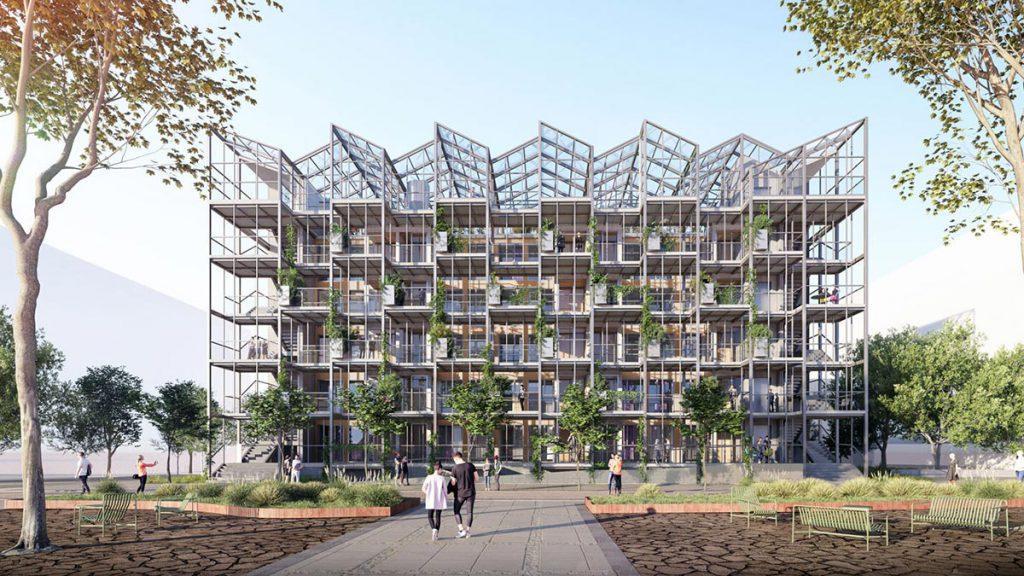
Bremen’s Überseeinsel district is a new, green neighbourhood currently under development. Affordable, sustainable and attractive living space will be on offer in the Residential Greenhouse. It is designed to be a home for both people and plants.
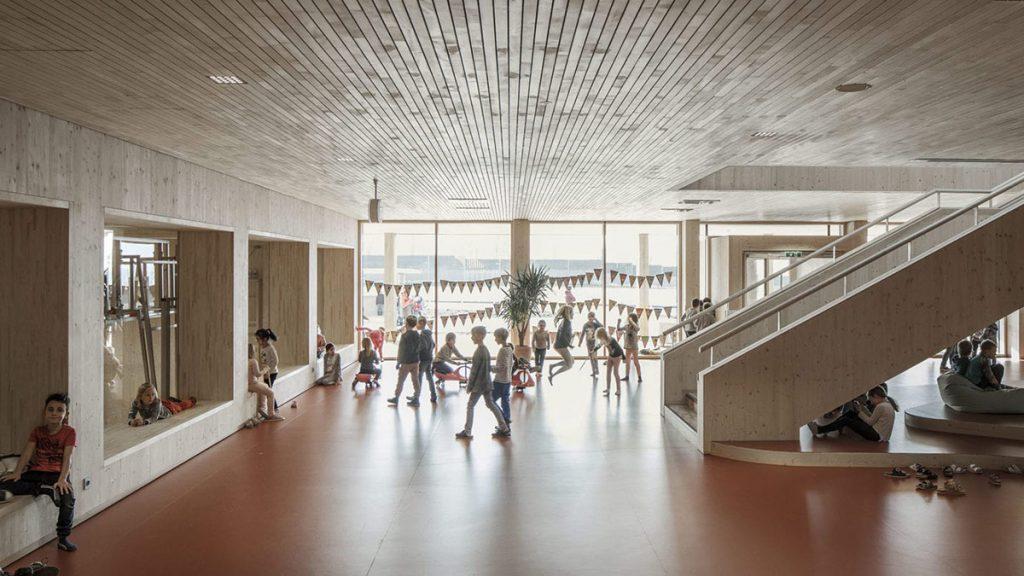
There is a severe shortage of schools – 15,000 are needed in Europe alone. The easy-to-assemble kit from Stora Enso – called Sylva – can be used to create eco-friendly wooden schools that offer children a positive learning environment and architecture that gives them a sense of meaning and purpose.

CEO Mette Kynne Frandsen has worked for over 20 years to make Danish architectural firm Henning Larsen what it is today: a pioneer in creating sustainable yet iconic architecture around the world. She gave us an interview before leaving her position.
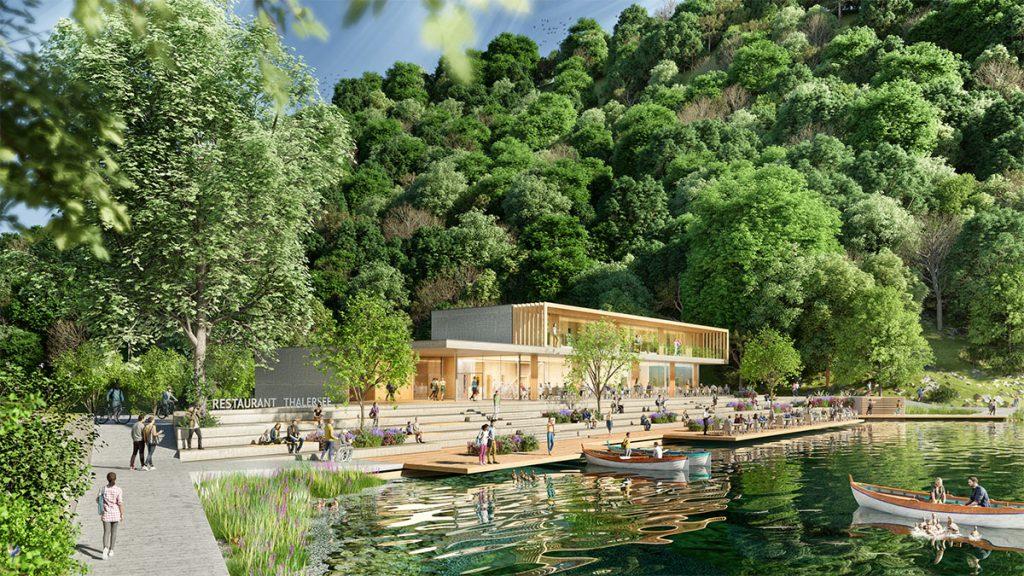
Architectural firm Pittino & Ortner based in Styria, Austria, is making a name for itself on two fronts: with its huge timber-hybrid book storage facility in Vienna and its café on Lake Thalersee near Graz.
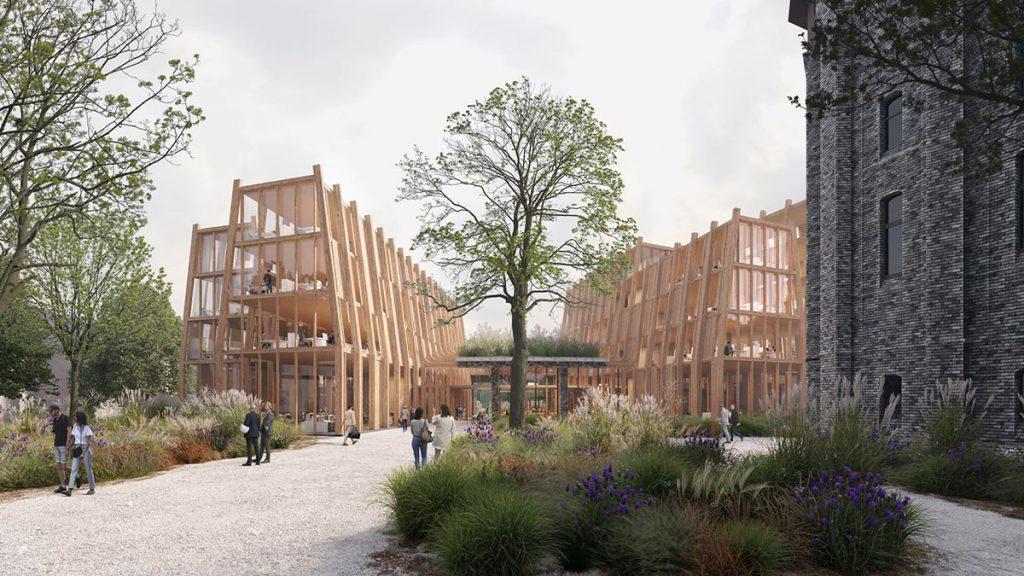
Industrial wastelands need new strategies to present workable options for re-use. The architects at Smartvoll are experts in this kind of development. One of their designs is an ecosystem for the former railway depot in Amstetten, Lower Austria, as living space for plants, animals and people.
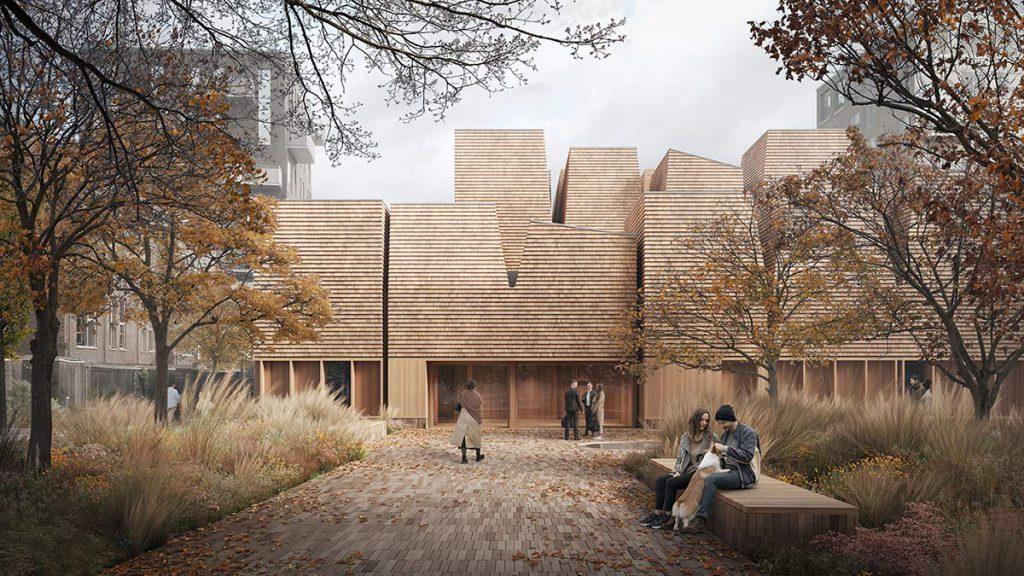
As the first church to be built in Copenhagen for 30 years, it may well become an icon. Ørestad Church is a sculptural timber construction designed by Henning Larsen. A kind of “Church 2.0”, it is also a modern community centre that reaches out to everybody regardless of their belief.
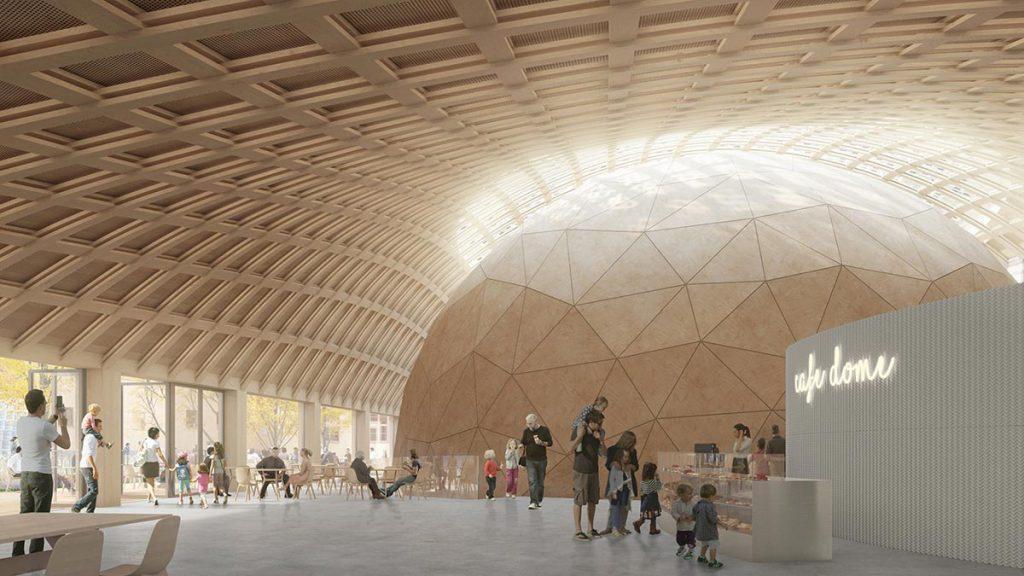
One of the world’s most spectacular timber engineering projects was recently completed in Sweden. Built for Stockholm’s Tekniska Museet, the Wisdome is a free-form structure using 20 kilometres of laminated veneer lumber. The design uses this kind of wood in an entirely new way.
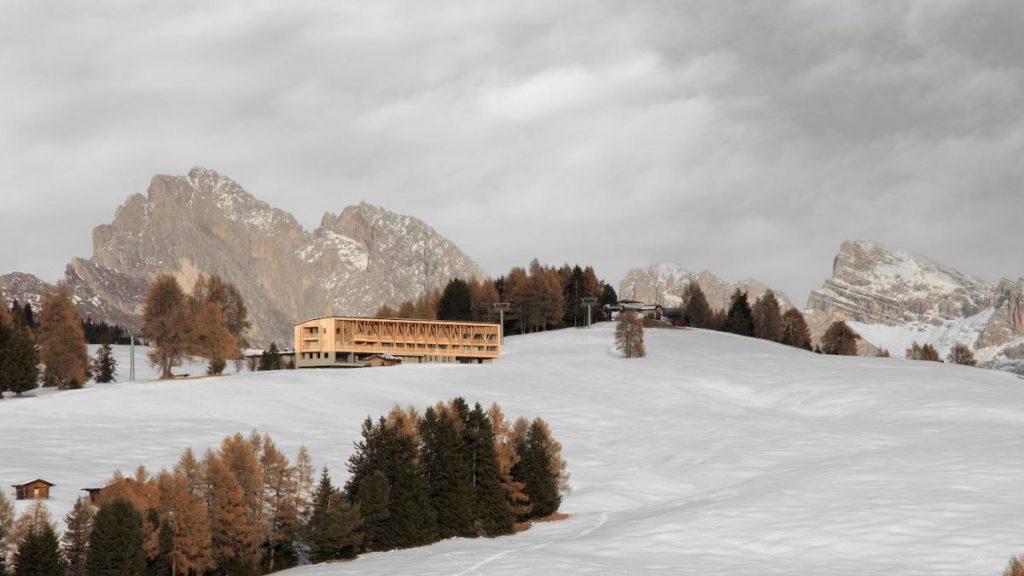
MoDus Architects have restructured a hotel complex that has decades of growth behind it. The external space created by a new layer of timber on the outside of the Icaro Hotel brings together the existing buildings to form a uniform whole. On the inside, guests encounter plenty of affectionate references to Alpine clichés.
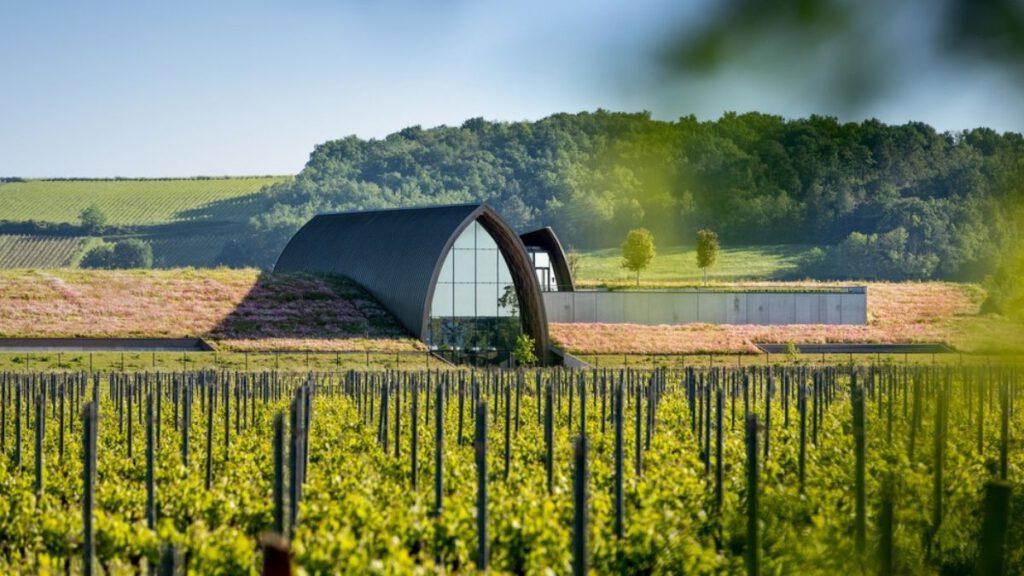
The fine wines from Château Angélus winery are now also produced in Libourne, France. Its new wine cellar designed by Eric Castagnotto looks like a church nave, which is probably no coincidence.
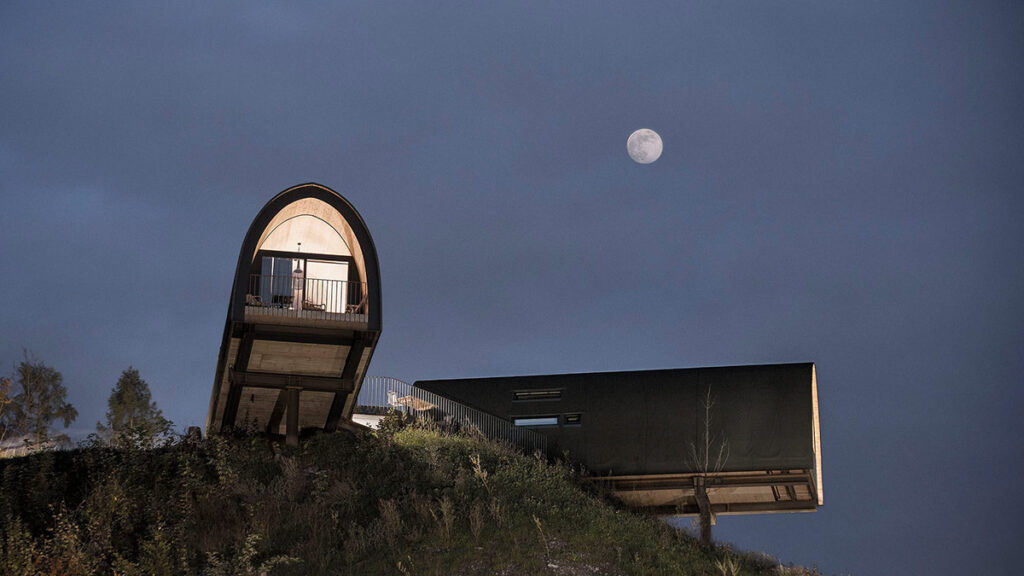
A luxury campsite at the foot of Vorarlberg’s Rätikon mountain range has been enlarged, with the addition of ten timber tiny houses. These hilltop chalets are a reinterpretation of the Alpine hut, and their design has won several awards.
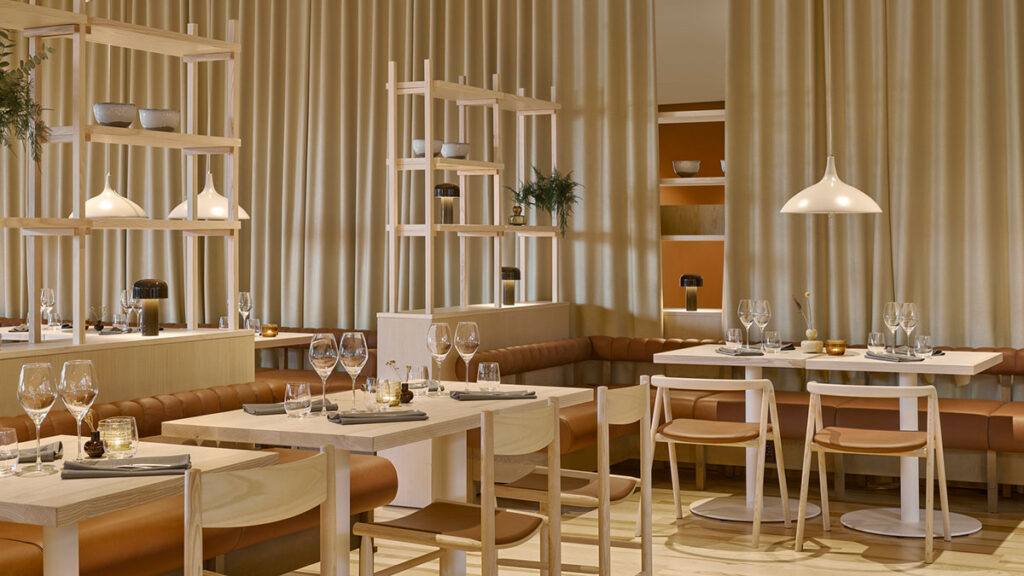
VALO is the name of a complex on the outskirts of Helsinki that combines hotel accommodation with office facilities. With a dual use that is both efficient and viable, the beds are folded away during the day, making way for fold-out desks.
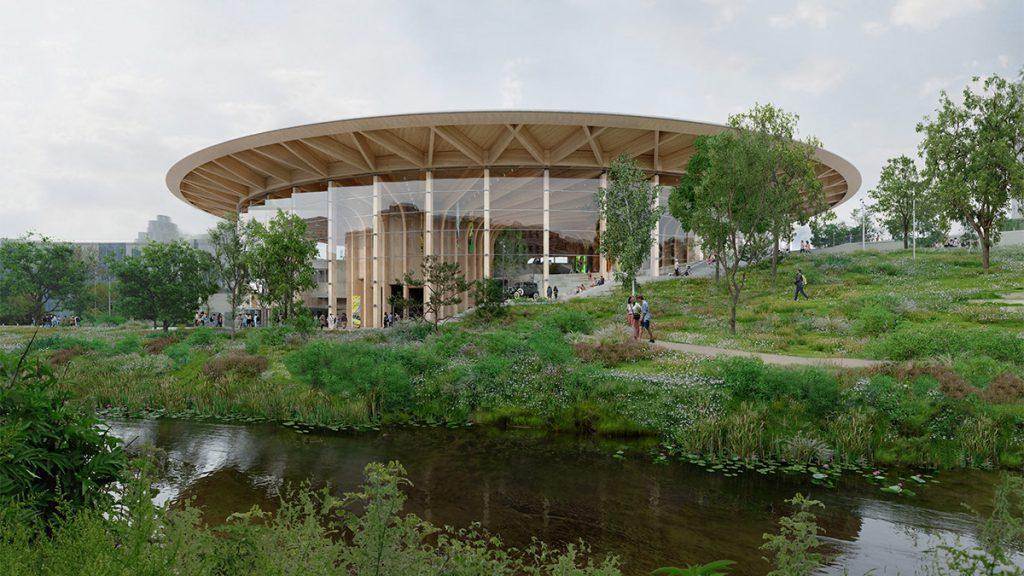
A special kind of discovery world is taking shape in Gothenburg, where Swedish vehicle manufacturer Volvo is using timber construction and nature to create its World of Volvo. The components and engineering for Henning Larsen’s design are being provided by Austrian firm Wiehag.
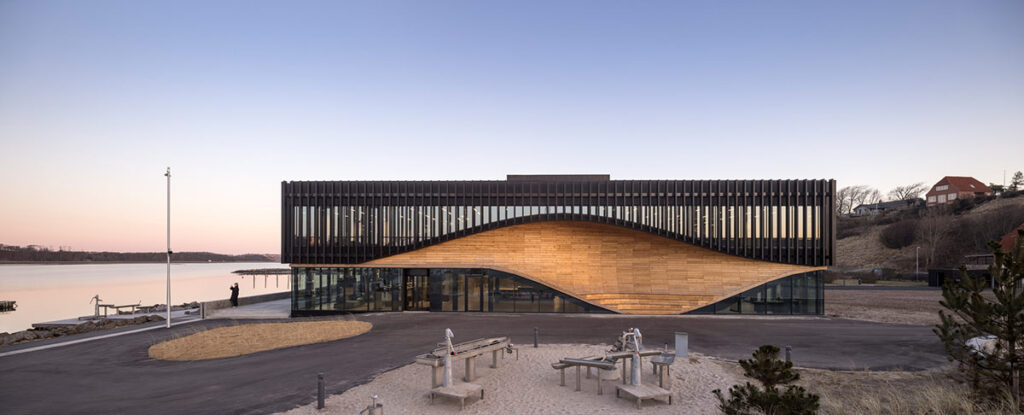
The Klimatorium in Lemvig, Denmark, devises strategies to counteract global climate change. Situated on the coast of Jutland, the building designed by architects 3XN has already achieved iconic status.
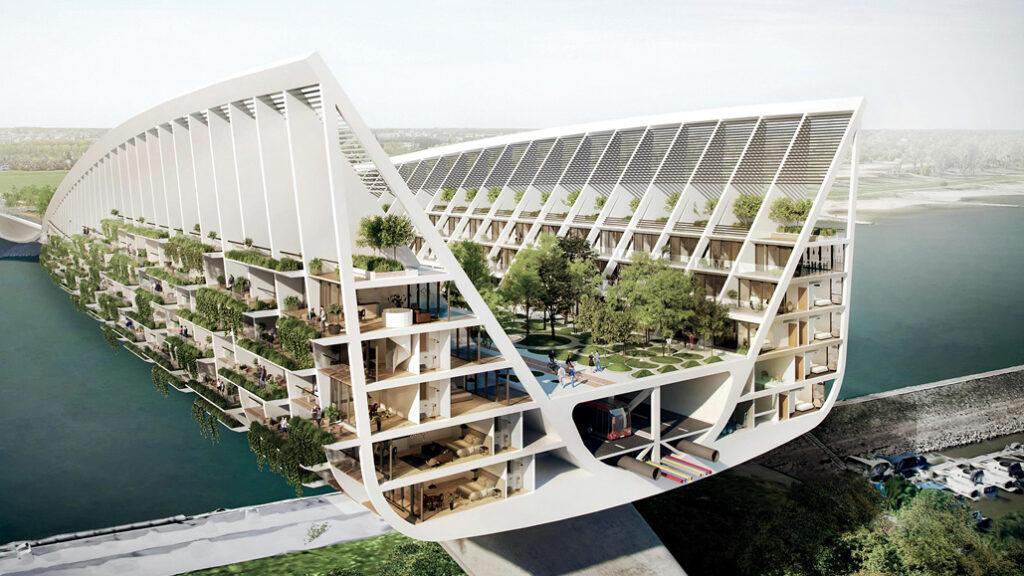
As Dusseldorf’s Theodor Heuss Bridge needs a complete overhaul, the team at RKW Architektur + put their heads together – and produced a spectacular new design. It is literally packed with potential.
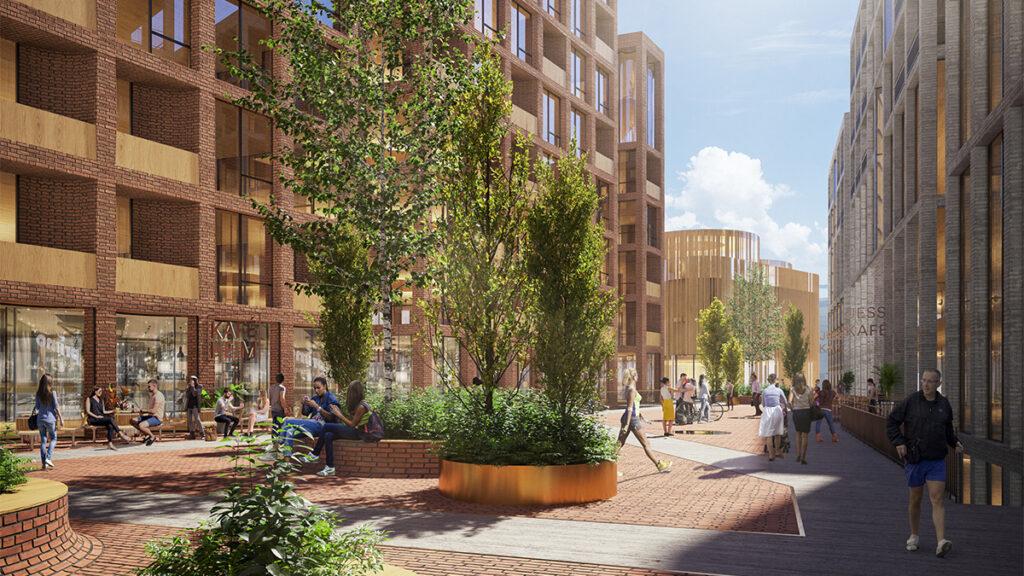
The town of Jessheim is getting an impressive new centre. Designed by Norwegian firm Mad arkitekter, it promises to combine sustainable urban development with attractive indoor and outdoor areas.
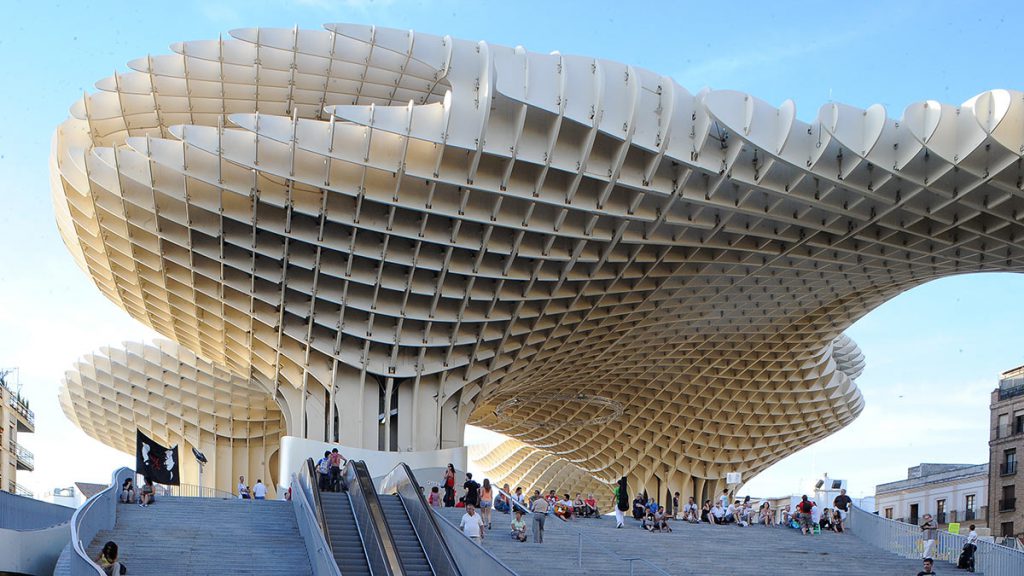
Metropol Parasol has achieved a phenomenal rejuvenation of a neglected square in Seville. The iconic timber construction by J.MAYER.H architects is a prime example of successful intervention in public space.
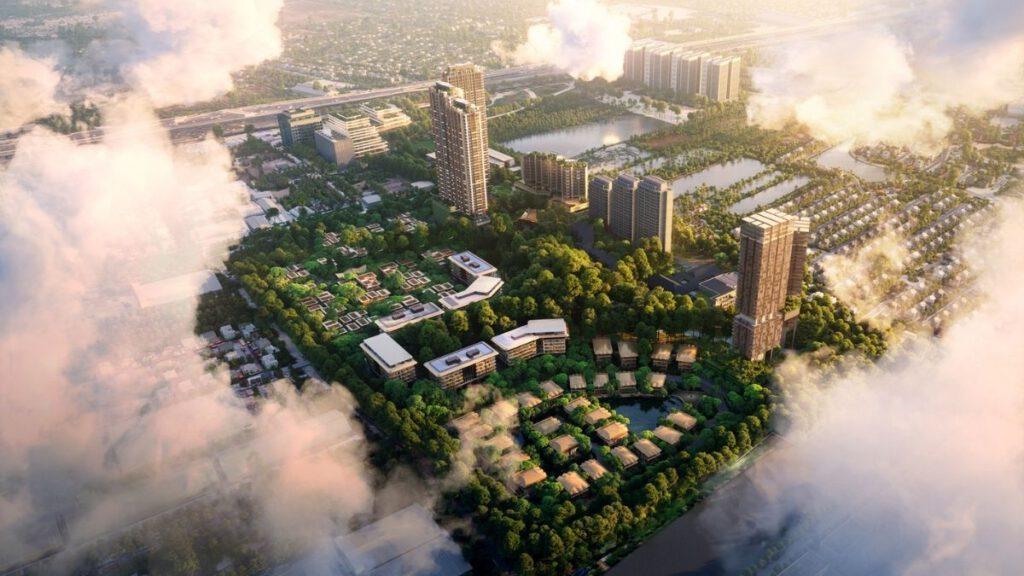
The Forestias is one of the largest property development projects in Thailand. The highlight of this project by Foster + Partners is a 48,000 m² urban forest designed by TK Studio.
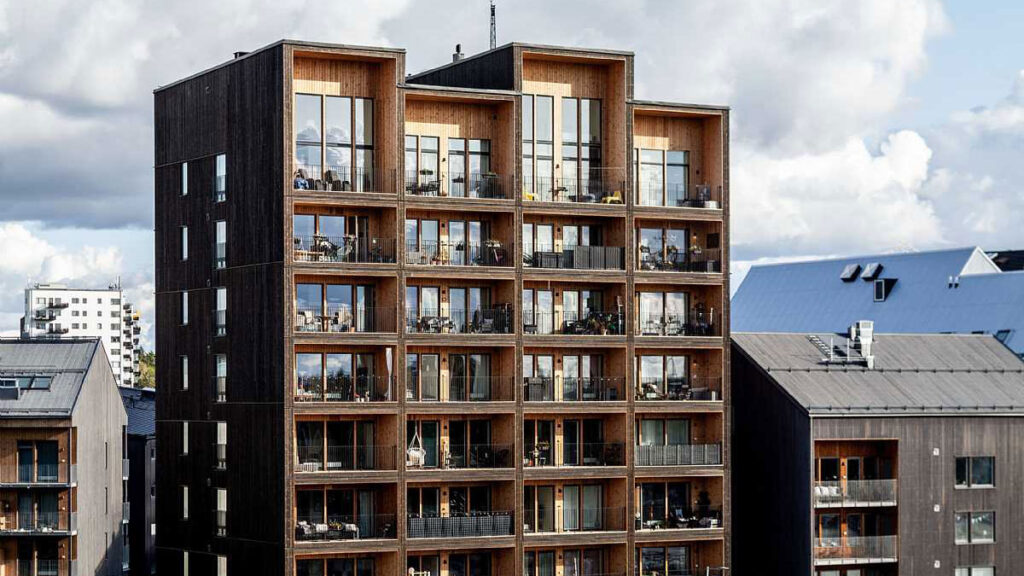
The Kajstaden Tall Timber Building in Sweden marks the beginning of a new generation of mass timber blocks. Using this building material saves around 500 tonnes of CO₂, and it also facilitates deconstruction later on.
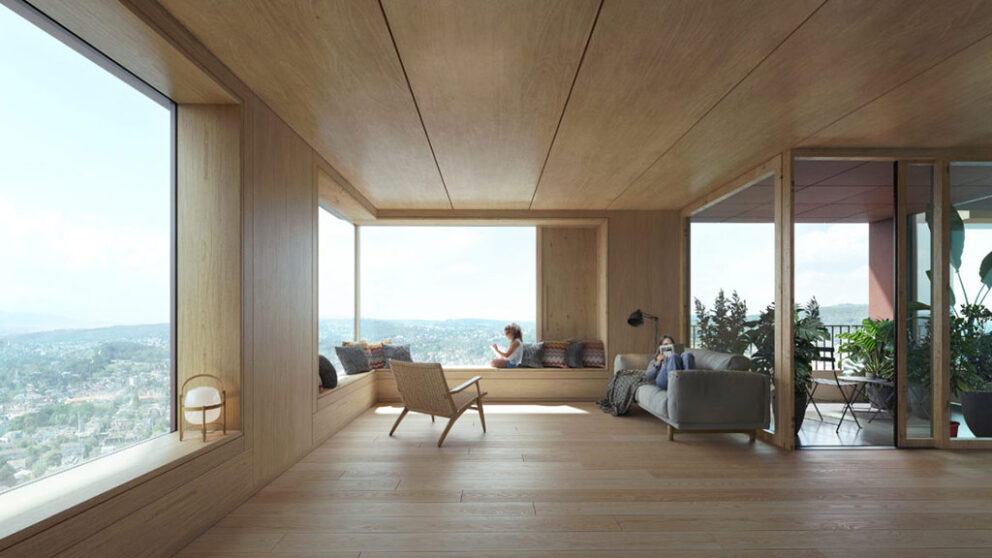
There’s a rocket preparing to launch in Switzerland. The residential timber high-rise named Rocket in Winterthur’s Lokstadt neighbourhood will reach a height of 100 metres. The tower’s residents will be part of the 2000-watt society.
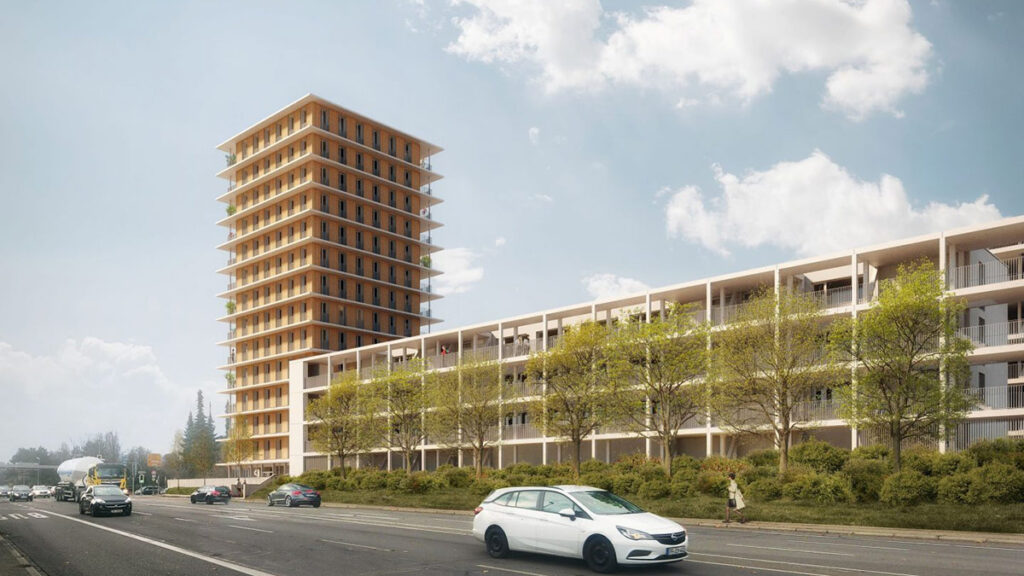
May we introduce Carl? Using timber for its facade besides the supporting structure, the apartment block is currently under construction in Pforzheim. Architect Peter W. Schmidt explains how this is being done.
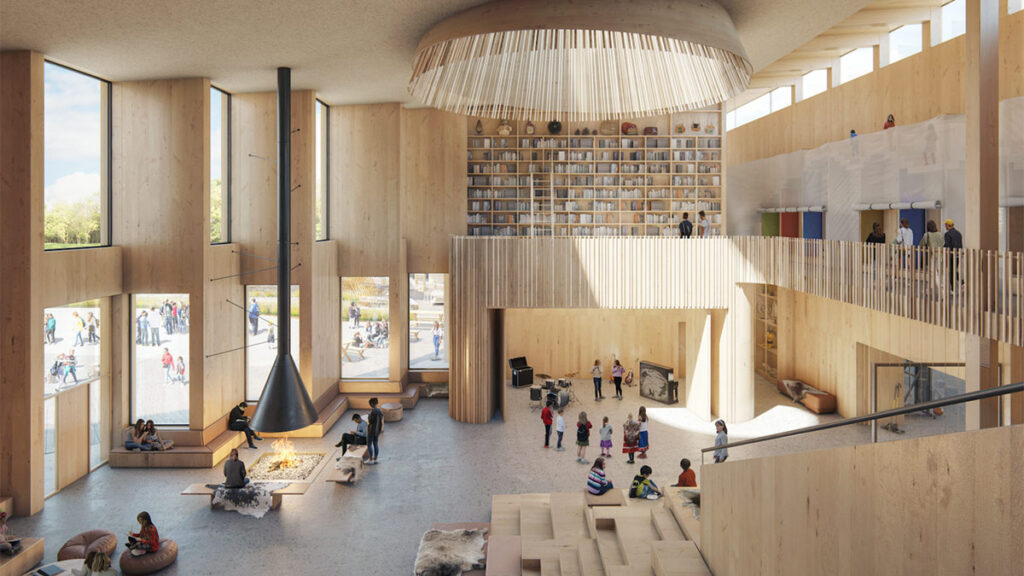
Kautokeino skole in northern Norway is a project that seeks to embrace the uniqueness of Sami culture and educational style. The mass wood building is so hygge, you’ll want to check in for a few nights.
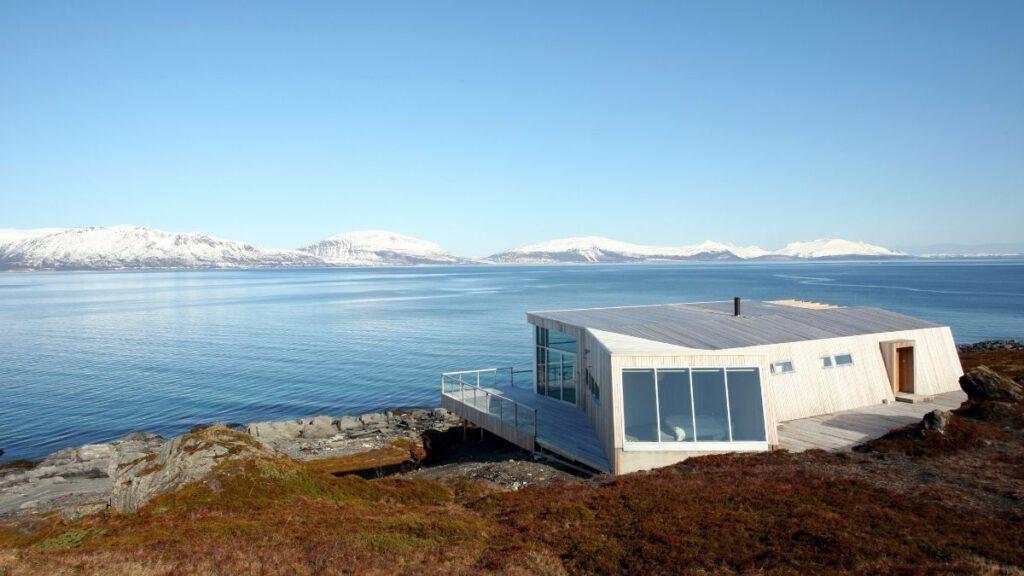
If you love the far north, you’ll love the Lyngen Alps. And if you love the Lyngen Alps, you’ll love the bungalows by architect Snorre Stinessen.
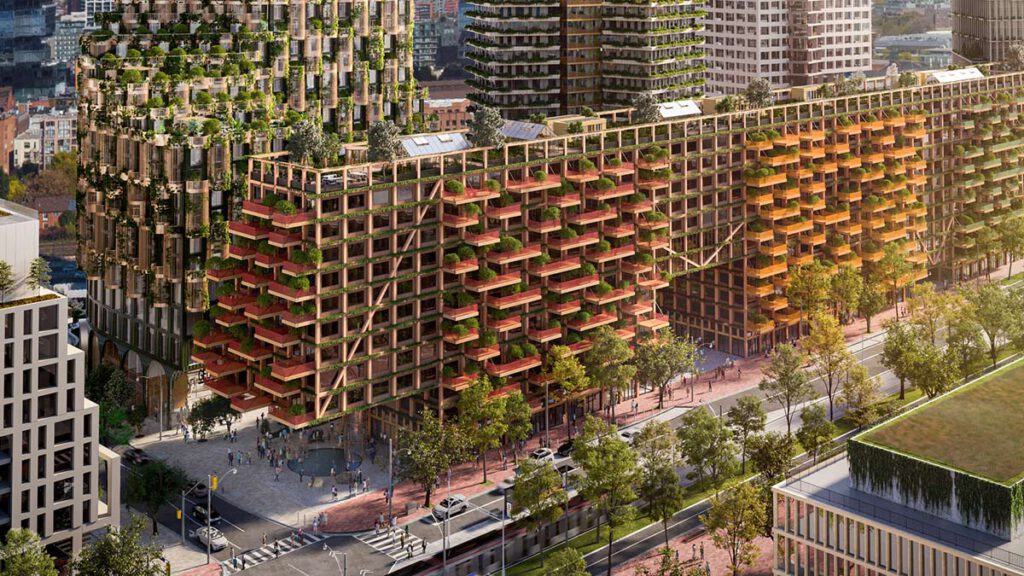
Canada’s megaproject Waterfront Toronto includes a new district called Quayside, an all-electric and climate-neutral community. Its highlights are a two-acre urban forest and the residential Timber House by architect David Adjaye.
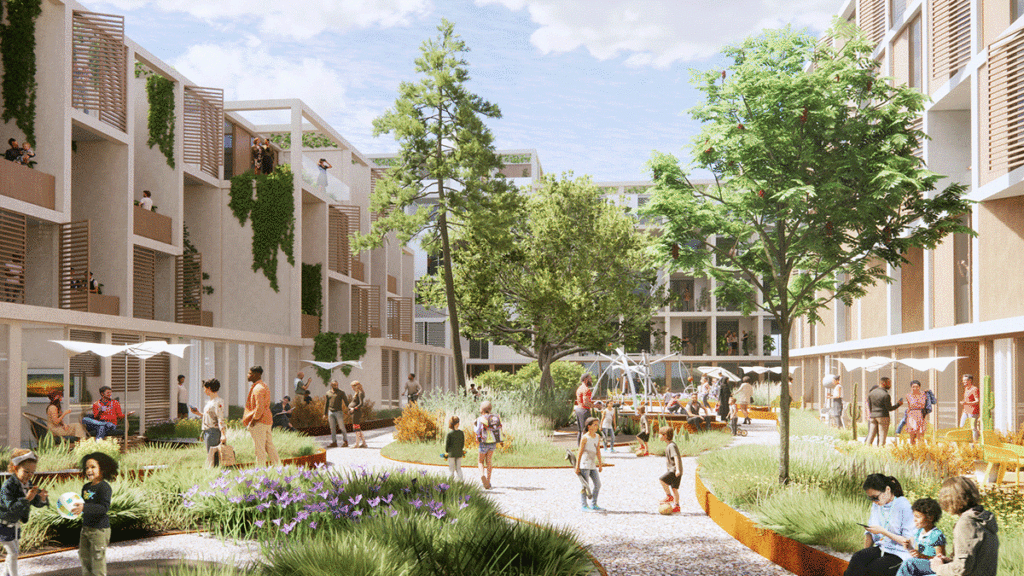
The city of San Diego in Southern California has plans for a new district, one that will be entirely void of cars. Known as Neighborhood Next, it must be one of the most radical projects in the USA.
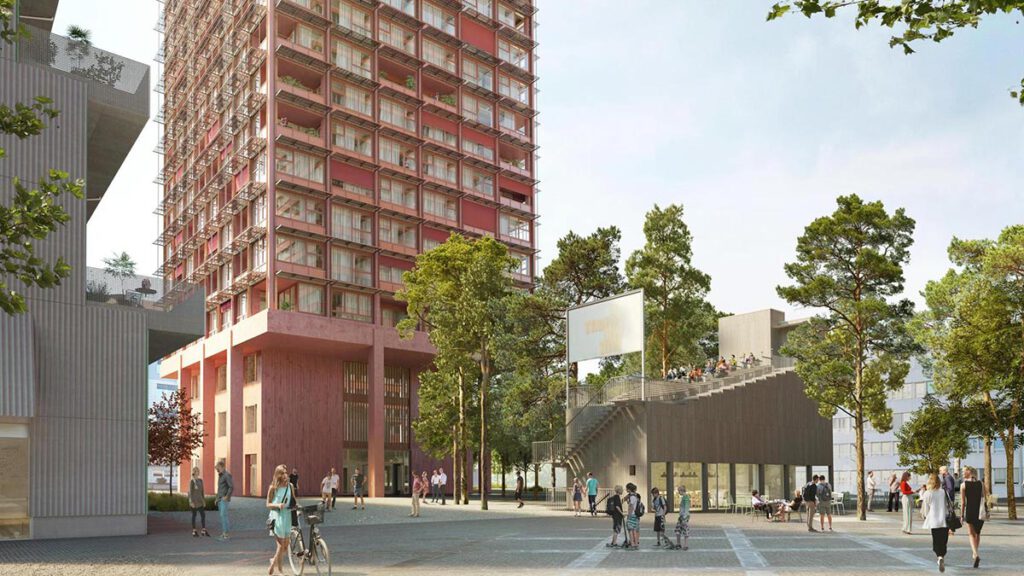
The new urban quarter Zwhatt near Zurich is designed to enable climate-neutral living at affordable prices. One of its buildings is a 75-metre-high timber hybrid tower known as Redwood, whose facade generates solar power.
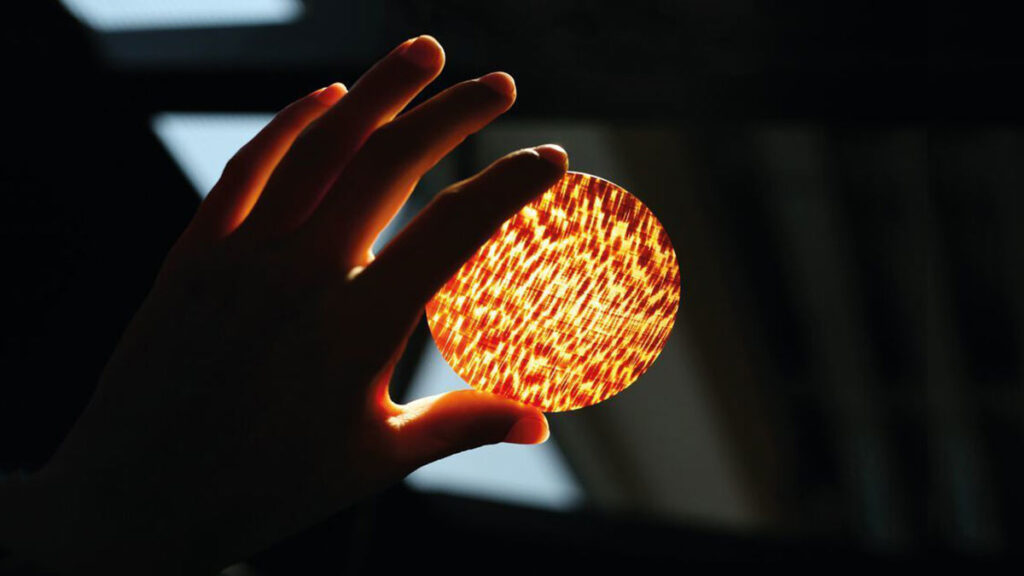
Architect and biologist Timothée Boitouzet has used nanotechnology to give wood an upgrade. The new material “Woodoo” is translucent, fire-resistant, weatherproof and up to five times stronger than normal wood.
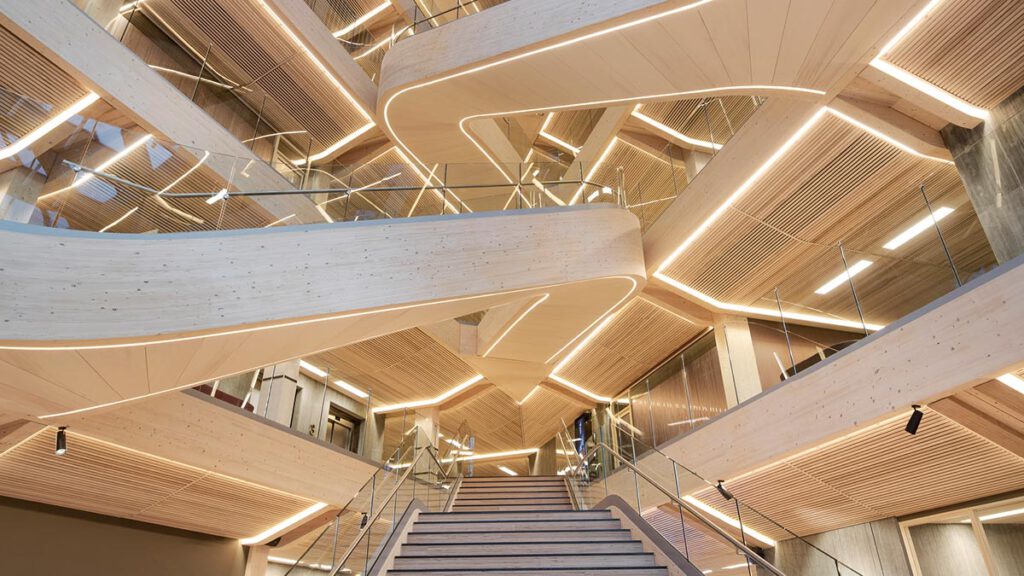
Timber construction can be decidedly high-tech, as illustrated by the head office built for SR Bank in Stavanger, Norway. Bjergsted Financial Park offers workplaces that are fit for the future, and it is among Europe’s largest engineered timber buildings.
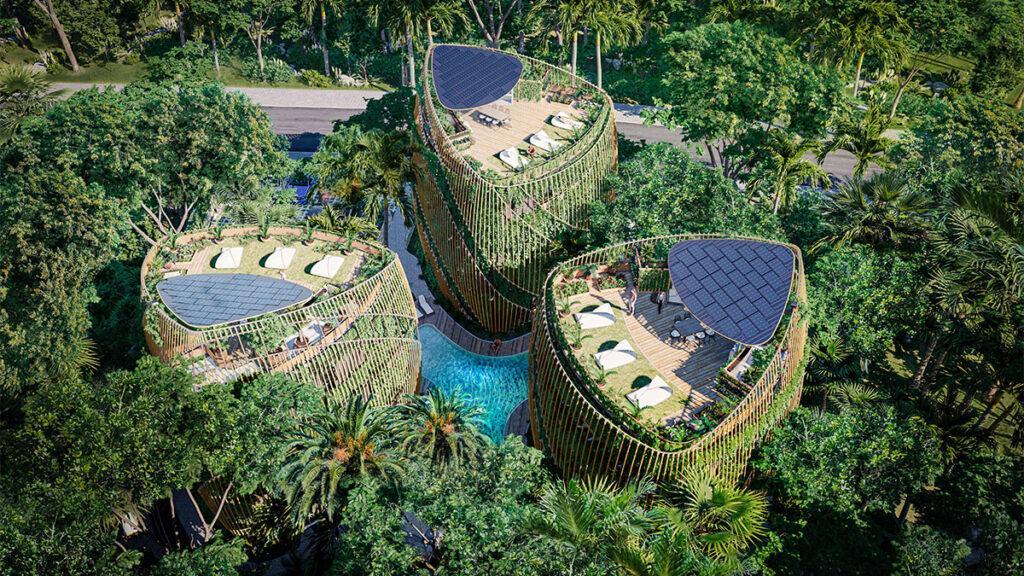
So, what does "Noom" actually mean? While Sanzpont [arquitectura] and Pedrajo + Pedrajo Arquitectos don't exactly reveal this, their "Living the Noom" concept is pretty clear: it’s all about a fresh take on housing. With environmental protection and quality of life as a top priority.
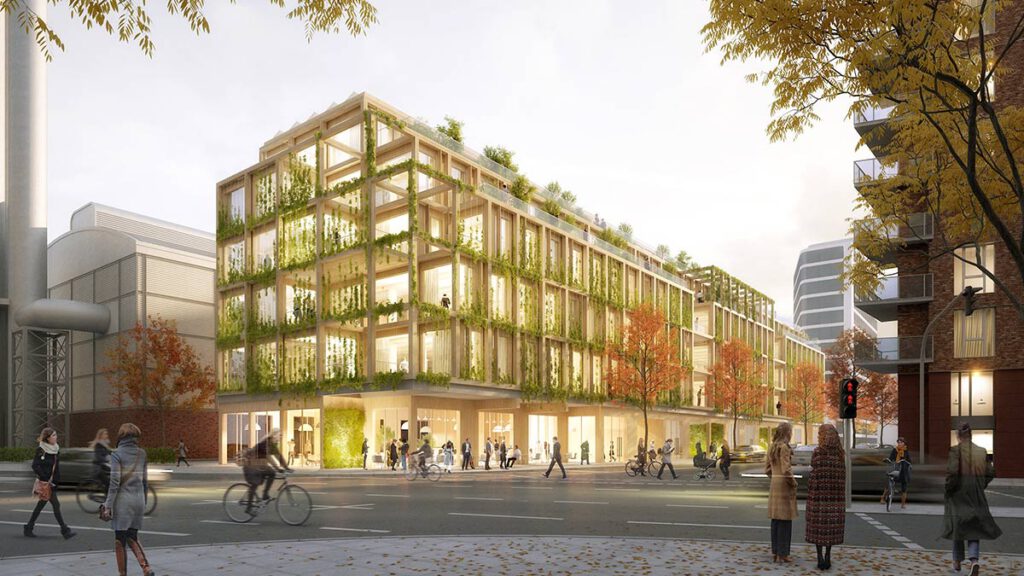
HafenCity Hamburg is an urban quarter fit for the future. Its eco cherry on the top is the “Null-Emissionshaus” (Zero Emissions Building), which is completely carbon-neutral – and can be dismantled like a Lego house.
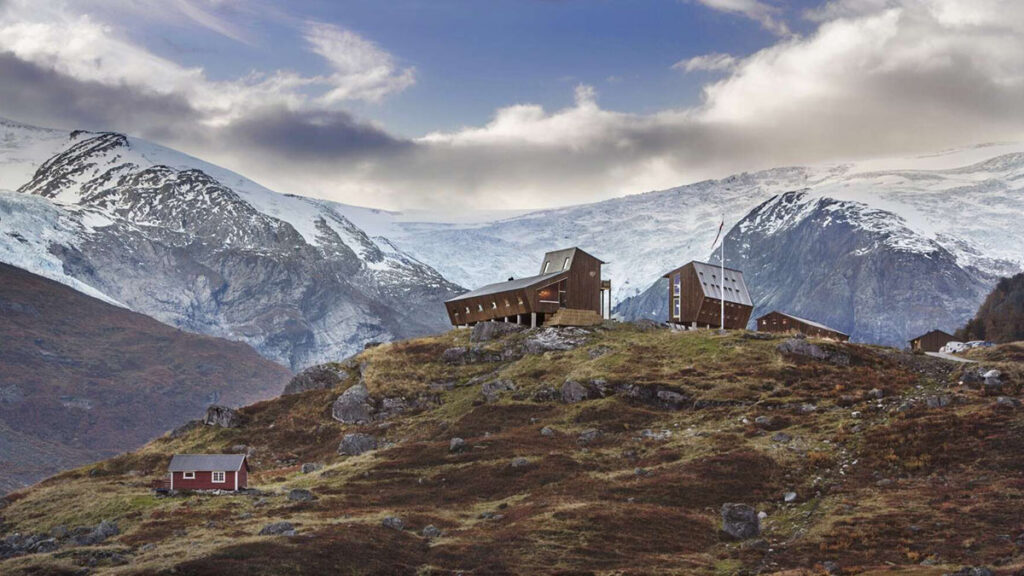
Snøhetta creates high-calibre architecture, including accommodation at high altitudes amidst Norway’s glaciers. The architects have enriched the Tungestølen mountain cabins with a special feeling of hygge.
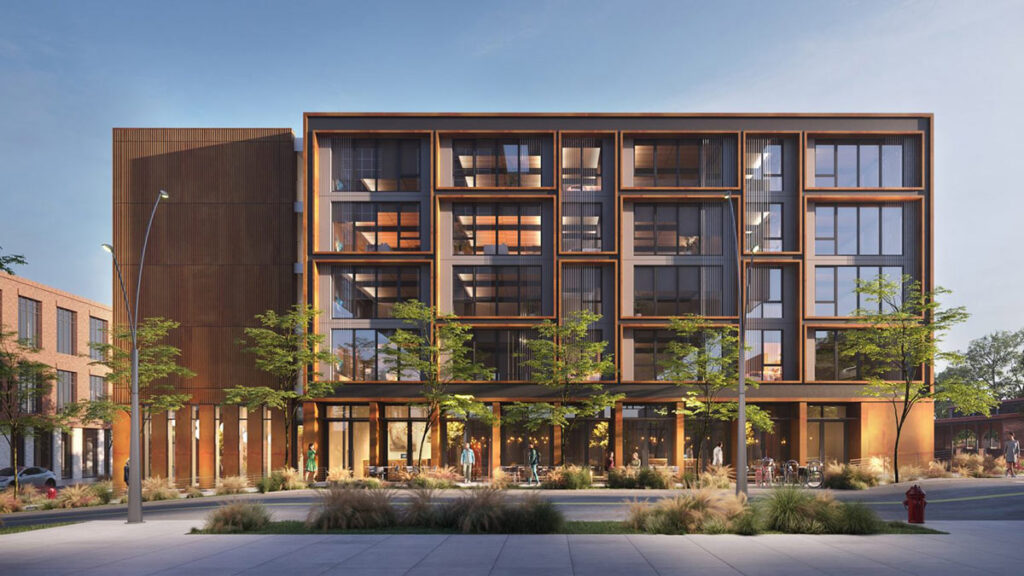
Apple’s former design head BJ Siegel has developed a concept for a timber modular house. The urban prefab named Juno is designed for mass production – and hopes for success on the scale of the iPhone.
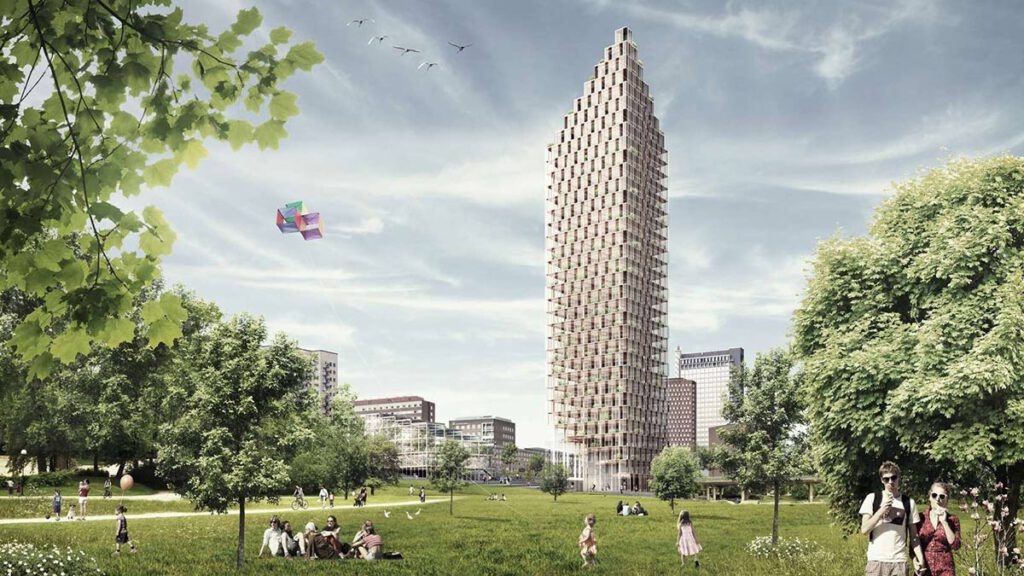
Communal vegetable patches, car sharing and a timber building that overtops many others. Sweden’s largest housing cooperative is celebrating its 100th anniversary with a project called Västerbroplan that shows how people will live in the future.
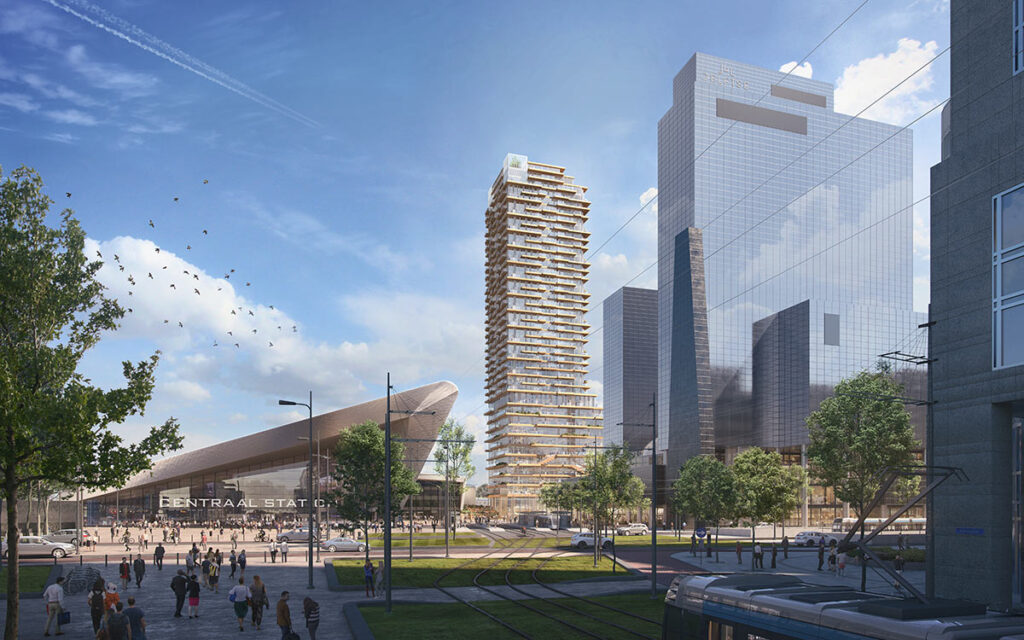
Bearing the name Tree House Rotterdam, Holland’s new landmark-to-be looks like a gigantic stack of wooden shelves with glass lofts added on top. It aims to take the sustainability of timber high-rises to a new level.
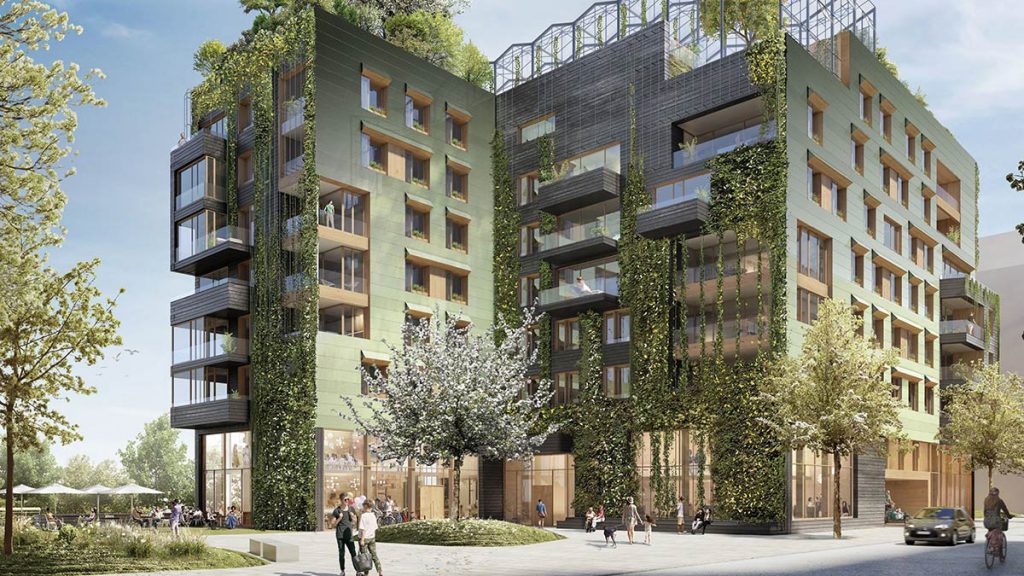
Three tonnes of lettuce and vegetables annually will be farmed on top of the We-House, a timber construction project in Hamburg’s HafenCity. The on-site restaurant serves meals for residents of this sophisticated eco-house at cost price.

The design for the urban office building Saint Denis in Paris shows the potential of parametric design in timber construction. Architect Arthur Mamou-Mani is a luminary in this new discipline, and we were able to meet him online.

Researchers at Cambridge University are helping to turn London’s spectacular vision of a wooden skyscraper into reality. The Oakwood Timber Tower is to rise 300 metres into the sky, almost level with the tallest building in the city.

Self-sufficiency is no longer a dream reserved for downshifters. The modular building system named The Farmhouse designed by Studio Precht allows residents to grow food in big cities.
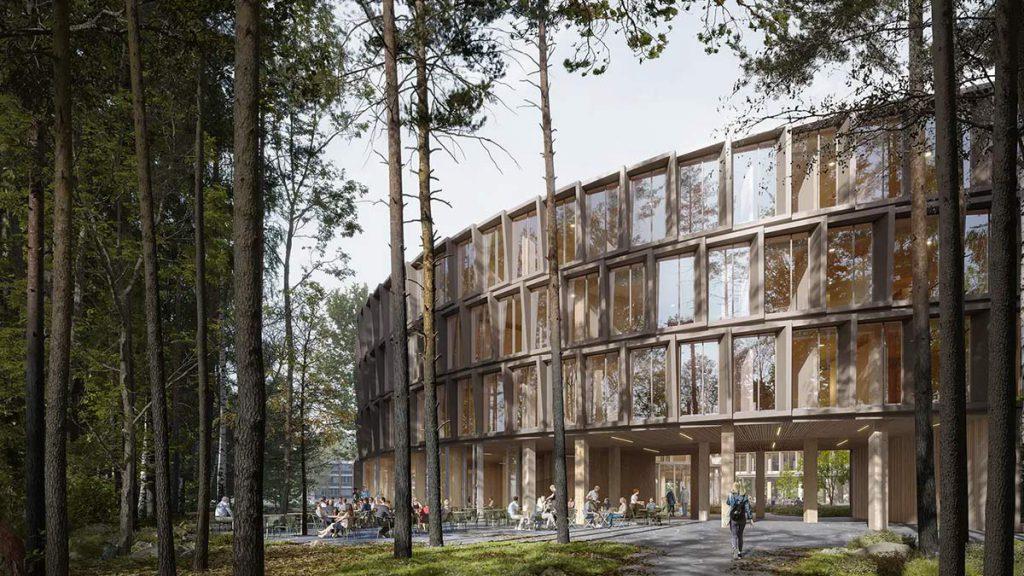
The European Organization for Nuclear Research examines the structure of matter. Its latest construction is already underway: named CERN B777 and designed by Henning Larsen, the new research centre will be round and mostly made of wood.
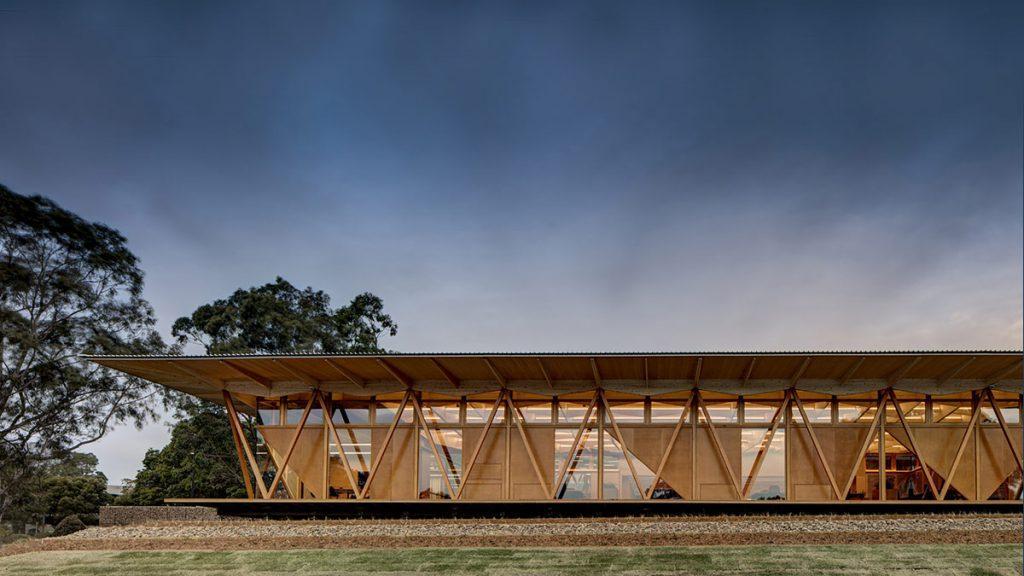
Australia could be described as a late mover as far as sustainable construction is concerned. One of its timber buildings – the award-winning Macquarie University Incubator – shows how to reduce energy and resources on all levels.
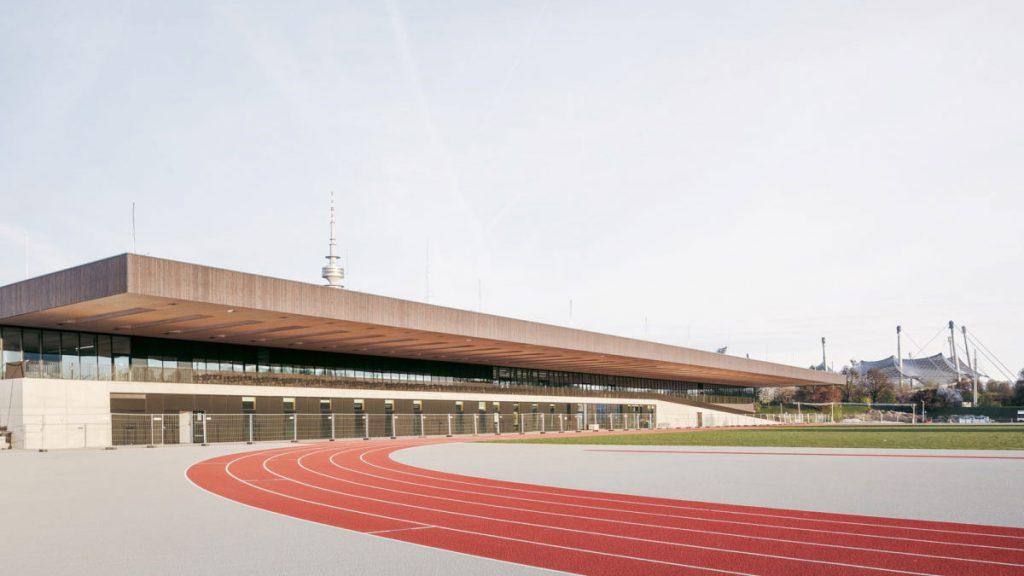
The TUM Campus at Munich’s Olympiapark shows how a carefully planned timber project can save resources and the associated costs. Shortlisted for the DAM Preis 2024, it was formerly Europe’s largest timber construction.

São Paulo is home to Brazil’s “most sustainable McDonald’s”. It has a timber design and is presented as an educational project for sustainable building. For the company, the wooden structure is a “recipe for the future”.

The master plan named Ecotope was chosen by renowned Swiss education and research institute EPFL to fulfil an important requirement. Green spaces will flourish instead of blanketing the ground with bleak tarmac; circular materials will replace concrete and steel.

On the Norwegian coast, the office building Lumber 4 has been constructed in only twelve months – using wood. For the architects at Oslotre, the project shows that timber buildings are not just sustainable, but also economically competitive.

The new Torshavn ferry terminal is set to give the Faroe Islands a new architectural landmark with a hybrid timber-concrete design. With architects Henning Larsen on board, it also re-opens the harbour to the islanders.

The German city of Heilbronn is home to a remarkable timber structure. Innovation Factory 2.0 displays a new kind of aesthetics, both on the inside and outside. This sophisticated paradise for innovation displays precision craftsmanship from Switzerland.

For its new office building Luisenblock West, the German Bundestag chose a design using prefabricated wooden modules. Austrian module experts Kaufmann Bausysteme have been working flat out ever since. On hotels, schools and student halls.

Anybody looking to combine a skiing trip with some architectural gems will be in their element at the top of the Chäserrugg in Switzerland. A tour of this award-winning building designed by Herzog & de Meuron gives an insight into sustainable construction methods at a height of 2,262 metres.

Stefan Winter ranks among the leading experts on the use of wood as a building material. In an interview with UBM Development, the professor and trained carpenter explains why hybrid solutions are not a step backwards for timber construction and how long-lasting timber products can help to mitigate climate change.

Shortly after Lungau Arena opened its doors, it was singled out as an ambassador for exemplary and sustainable timber construction. This new sports facility goes far beyond economic and functional requirements.

A new entrance building has been designed for the Deutsches Technikmuseum in Berlin. With its striking lattice roof, the design by Austrian architectural firm Innauer Matt demonstrates that modern timber construction is a byword for progress through sustainability.

The new Raiffeisen Landesbank Kärnten building is a transparent timber construction with room for sheep on its roof. In this interview, querkraft architect Jakob Dunkl talks about the design and also the connection between sustainability and love.

German car manufacturer BMW is upgrading its resources. The company is building a new Talent Campus at its Munich headquarters to equip its staff for e-mobility and automation. With wood as the main construction material, the design is by local architecture firm allmannwappner.

The Marga Klompé Building at Tilburg University is the first academic building in the Netherlands to be built out of wood. Insulation made from recycled denim jeans is part of the circular design by Powerhouse Company.

Impact Hub Berlin is a community and coworking space that has taken recyclable construction from theory to practice. LXSY Architekten used timber construction and recycled building materials for the interior design in a converted old warehouse.

One hundred years after patenting of the Zollinger roof, this self-supporting timber structure is experiencing a renaissance. Designed to save materials, recyclable and easy to build, it has regained popularity for the construction of today’s factory workshops.

Copenhagen is fast approaching its goal of achieving carbon neutrality. Its former city architect Camilla van Deurs, recently appointed head of the Nordic Office of Architecture's new specialist area for strategic urban development, spoke to ubm magazine. about the biggest levers for reducing carbon emissions.

A supermarket designed as a net-zero construction that produces its own food for the region. This is the concept behind Rewe Green Farming and its prototype in Wiesbaden, Germany. Timber engineering is central to the company’s plan for similar stores.

The recent rebuild of Voisthaler Hut in Austria’s Hochschwab Mountains uses structural timber design with sophisticated architectural and ecological features. This energy self-sufficient mountain hut designed by Dietger Wissounig Architekten has been awarded the “Umweltgütesiegel” and also won the 2023 BIG SEE Architecture Award.

Although this design looks like a utopian dream, in Copenhagen it is set to become reality. Over the coming years, the Danish capital will be introducing timber-hybrid metro stations. The concept by JaJa Architects adopts a holistic approach and takes climate-friendly building below ground.

Not far from Amsterdam, fashion giant Bestseller is building Europe’s largest timber logistics centre – called “Logistics Center West”. Designed by Danish architects Henning Larsen, it aims to set new standards in sustainability and design.

Its design blends alpine architecture with the outline of a craggy mountain range. The Congress and Exhibition Centre in the municipality of Agordo in northern Italy reimagines aesthetic forms of expression in timber construction.

The Belgian city of Antwerp will soon benefit from a Japanese-inspired, timber-hybrid residential tower that is currently under construction. The building was designed by Pritzker Prize winner Shigeru Ban, who takes nature and wood as central inspiration for his designs.

Bremen’s Überseeinsel district is a new, green neighbourhood currently under development. Affordable, sustainable and attractive living space will be on offer in the Residential Greenhouse. It is designed to be a home for both people and plants.

There is a severe shortage of schools – 15,000 are needed in Europe alone. The easy-to-assemble kit from Stora Enso – called Sylva – can be used to create eco-friendly wooden schools that offer children a positive learning environment and architecture that gives them a sense of meaning and purpose.

CEO Mette Kynne Frandsen has worked for over 20 years to make Danish architectural firm Henning Larsen what it is today: a pioneer in creating sustainable yet iconic architecture around the world. She gave us an interview before leaving her position.

Architectural firm Pittino & Ortner based in Styria, Austria, is making a name for itself on two fronts: with its huge timber-hybrid book storage facility in Vienna and its café on Lake Thalersee near Graz.

Industrial wastelands need new strategies to present workable options for re-use. The architects at Smartvoll are experts in this kind of development. One of their designs is an ecosystem for the former railway depot in Amstetten, Lower Austria, as living space for plants, animals and people.

As the first church to be built in Copenhagen for 30 years, it may well become an icon. Ørestad Church is a sculptural timber construction designed by Henning Larsen. A kind of “Church 2.0”, it is also a modern community centre that reaches out to everybody regardless of their belief.

One of the world’s most spectacular timber engineering projects was recently completed in Sweden. Built for Stockholm’s Tekniska Museet, the Wisdome is a free-form structure using 20 kilometres of laminated veneer lumber. The design uses this kind of wood in an entirely new way.

MoDus Architects have restructured a hotel complex that has decades of growth behind it. The external space created by a new layer of timber on the outside of the Icaro Hotel brings together the existing buildings to form a uniform whole. On the inside, guests encounter plenty of affectionate references to Alpine clichés.

The fine wines from Château Angélus winery are now also produced in Libourne, France. Its new wine cellar designed by Eric Castagnotto looks like a church nave, which is probably no coincidence.

A luxury campsite at the foot of Vorarlberg’s Rätikon mountain range has been enlarged, with the addition of ten timber tiny houses. These hilltop chalets are a reinterpretation of the Alpine hut, and their design has won several awards.

VALO is the name of a complex on the outskirts of Helsinki that combines hotel accommodation with office facilities. With a dual use that is both efficient and viable, the beds are folded away during the day, making way for fold-out desks.

A special kind of discovery world is taking shape in Gothenburg, where Swedish vehicle manufacturer Volvo is using timber construction and nature to create its World of Volvo. The components and engineering for Henning Larsen’s design are being provided by Austrian firm Wiehag.

The Klimatorium in Lemvig, Denmark, devises strategies to counteract global climate change. Situated on the coast of Jutland, the building designed by architects 3XN has already achieved iconic status.

As Dusseldorf’s Theodor Heuss Bridge needs a complete overhaul, the team at RKW Architektur + put their heads together – and produced a spectacular new design. It is literally packed with potential.

The town of Jessheim is getting an impressive new centre. Designed by Norwegian firm Mad arkitekter, it promises to combine sustainable urban development with attractive indoor and outdoor areas.

Metropol Parasol has achieved a phenomenal rejuvenation of a neglected square in Seville. The iconic timber construction by J.MAYER.H architects is a prime example of successful intervention in public space.

The Forestias is one of the largest property development projects in Thailand. The highlight of this project by Foster + Partners is a 48,000 m² urban forest designed by TK Studio.

The Kajstaden Tall Timber Building in Sweden marks the beginning of a new generation of mass timber blocks. Using this building material saves around 500 tonnes of CO₂, and it also facilitates deconstruction later on.

There’s a rocket preparing to launch in Switzerland. The residential timber high-rise named Rocket in Winterthur’s Lokstadt neighbourhood will reach a height of 100 metres. The tower’s residents will be part of the 2000-watt society.

May we introduce Carl? Using timber for its facade besides the supporting structure, the apartment block is currently under construction in Pforzheim. Architect Peter W. Schmidt explains how this is being done.

Kautokeino skole in northern Norway is a project that seeks to embrace the uniqueness of Sami culture and educational style. The mass wood building is so hygge, you’ll want to check in for a few nights.

If you love the far north, you’ll love the Lyngen Alps. And if you love the Lyngen Alps, you’ll love the bungalows by architect Snorre Stinessen.

Canada’s megaproject Waterfront Toronto includes a new district called Quayside, an all-electric and climate-neutral community. Its highlights are a two-acre urban forest and the residential Timber House by architect David Adjaye.

The city of San Diego in Southern California has plans for a new district, one that will be entirely void of cars. Known as Neighborhood Next, it must be one of the most radical projects in the USA.

The new urban quarter Zwhatt near Zurich is designed to enable climate-neutral living at affordable prices. One of its buildings is a 75-metre-high timber hybrid tower known as Redwood, whose facade generates solar power.

Architect and biologist Timothée Boitouzet has used nanotechnology to give wood an upgrade. The new material “Woodoo” is translucent, fire-resistant, weatherproof and up to five times stronger than normal wood.

Timber construction can be decidedly high-tech, as illustrated by the head office built for SR Bank in Stavanger, Norway. Bjergsted Financial Park offers workplaces that are fit for the future, and it is among Europe’s largest engineered timber buildings.

So, what does "Noom" actually mean? While Sanzpont [arquitectura] and Pedrajo + Pedrajo Arquitectos don't exactly reveal this, their "Living the Noom" concept is pretty clear: it’s all about a fresh take on housing. With environmental protection and quality of life as a top priority.

HafenCity Hamburg is an urban quarter fit for the future. Its eco cherry on the top is the “Null-Emissionshaus” (Zero Emissions Building), which is completely carbon-neutral – and can be dismantled like a Lego house.

Snøhetta creates high-calibre architecture, including accommodation at high altitudes amidst Norway’s glaciers. The architects have enriched the Tungestølen mountain cabins with a special feeling of hygge.

Apple’s former design head BJ Siegel has developed a concept for a timber modular house. The urban prefab named Juno is designed for mass production – and hopes for success on the scale of the iPhone.

Communal vegetable patches, car sharing and a timber building that overtops many others. Sweden’s largest housing cooperative is celebrating its 100th anniversary with a project called Västerbroplan that shows how people will live in the future.

Bearing the name Tree House Rotterdam, Holland’s new landmark-to-be looks like a gigantic stack of wooden shelves with glass lofts added on top. It aims to take the sustainability of timber high-rises to a new level.

Three tonnes of lettuce and vegetables annually will be farmed on top of the We-House, a timber construction project in Hamburg’s HafenCity. The on-site restaurant serves meals for residents of this sophisticated eco-house at cost price.
The design for the urban office building Saint Denis in Paris shows the potential of parametric design in timber construction. Architect Arthur Mamou-Mani is a luminary in this new discipline, and we were able to meet him online.

